Nava Atlas's Blog, page 36
August 22, 2021
Orphans and Boarding Schools: On rereading Daddy-Long-Legs by Jean Webster
The summer I was twelve, I pulled a well-read and worn book from the shelves of the public library and discovered a story that seemed to be told directly to me. Behind the deceptively dull cover of Daddy-Long-Legs by Jean Webster (1912) were letters and drawings that pulled me hard and fast into Judy Abbott’s life—an orphan at boarding school.
So many of my favorite things were combined in this book: orphans and lonely childhoods, girls succeeding against the odds with their studious natures, boarding school and class events, and perhaps most of all, the burgeoning writer’s sensibility that I also enjoyed in Louise Fitzhugh’s Harriet the Spy (1964).
I borrowed and devoured Jean Webster’s Daddy-Long-Legs that very afternoon; I’ve revisited it many times.
Orphan girls
Judy’s orphan status reminded me of other favorite characters, from classics like Emily of New Moon (1923) by L.M. Montgomery, Ballet Shoes (1936) by Noel Streatfeild, and A Little Princess (1905) by Frances Hodgson Burnett.
And later-twentieth-century orphans, too, like Mandy the eponymous heroine of Julie Andrews Edwards’ 1971 novel and Christina in K.M. Peyton’s Flambards (1967).
As a kid with recently divorced parents, relocated a couple of hundred miles from familiar territory, I related to these characters’ dislocation. Pseudo-orphans, girls temporarily separated from family—in Astrid Lindgren’s Pippi Longstocking (1945) and Joan Aiken’s The Wolves of Willoughby Chase (1962)—also appealed.
Even girls unexpectedly living in single-family households like the March sisters in Louisa May Alcott’s Little Women (1880) — Rose Campbell, in Eight Cousins (1874), was a proper orphan but I hadn’t met her yet.
And Judy wasn’t only an orphan, but an orphan keen on rewarding her anonymous benefactor’s investment — not simply surviving, but thriving. The biography of my copy of Daddy-Long-Legs described its author as an orphan, but Jean Webster lived with both parents until she was fifteen years old.
Nonetheless, as Alice Sanford’s article in the Vassar Miscellany (June 1915) explains, the success of Daddy-Long-Legs created many opportunities for actual orphans:
“One hundred orphan children have since been placed in families by the Society of the National Sons and Daughters of the Golden West. Miss Webster has been consulted repeatedly by prominent social workers to suggest improvements in children’s institutional homes, besides being invited to become a Director in many of them.”
Whether true or not, the author having been described as an orphan would have made Judy’s story about life at the John Grier Home and Fergussen College more credible. And decades after the author’s death, Vassar praised Daddy-Long-Legs as “a moving revelation of child-life in an orphanage, timeless in its humor, justice, and lovable make-believe.”
The book’s social welfare message “that under-privileged children, if given a chance, are capable of succeeding in life and of enjoying its beauty” is simple but powerful. (September 1936, Vassar Miscellany)
. . . . . . . . .
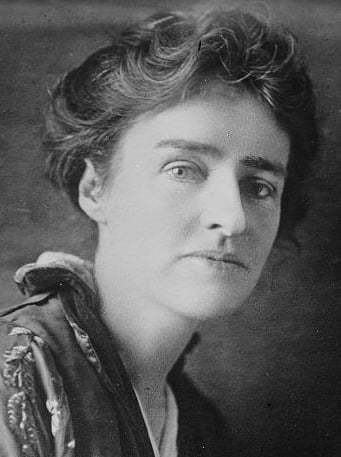
Learn more about Jean Webster
. . . . . . . . .
I also related to the work-in-progress nature of young Jerusha, who changed her name to “Judy” when she went to Fergussen Hall (the author herself changed from “Alice” to “Jean” when she went to college), echoing Anne imagining herself into becoming “Cordelia” in L. M. Montgomery’s Anne of Green Gables (1908).
I was waiting for someone to see the real me, like Judy’s benefactor saw her: “He believes that you have originality, and he is planning to educate you to become a writer.”
In the story, “Jerusha” was said to be a name from a tombstone and a telephone book. In real life, Jean Webster’s friend Ethelyn McKinney had a grandmother named Jerusha, and Jean’s connection to the McKinney family intensified when she married Ethelyn’s brother in 1915 (though nobody claimed the grandmother’s name was an inspiration).
Eventually, Judy’s story would succeed not only on the printed page but on the Broadway stage and multiple Hollywood films. Webster herself adapted the work for theatre and Alice Sanford shares this evidence of the author’s commitment to its success:
“It is a fact that on the opening night of the play in February at Atlantic City, Mr. [Henry] Miller was very nervous and dubious, and said to Miss Webster that he would sell out the house for twenty dollars. She, however, was confident, and predicted a success.”
Boarding schools
I preferred Enid Blyton-style school stories to literary alternatives; Charlotte Brontë’s Jane Eyre bored me after Jane left Lowood and only finished reading it decades later. When Sara Crewe was in classes with Miss Minchin in A Little Princess, life was fine, but her fortunes soon took a turn.
Judy’s life at Fergussen Hall was more bookish than the Naughtiest Girl, St. Clare’s, and Malory Towers stories. Although lacking the privileges of her well-to-do classmates, Judy must catch up scholastically and socially:
“The trouble with college is that you are expected to know such a lot of things you’ve never learned. It’s very embarrassing at times.”
I preferred the stories where children connected with teachers who recognized their talents, and even though I was less fond of books about boys (unless they were one of the Three Investigators or the love interest in a Beverly Cleary romance), a story like Irene Hunt’s The Lottery Rose squeaked past my anti-boy bias because of the boarding-school setting.
Judy includes specifics about her classes and her independent work, which held its own appeal. Jean Webster’s homage to her beloved Vassar College is most immediately recognizable in When Patty Went to College (1903) and Just Patty (1911). But a 1912 review in the Vassar Miscellany by Gabrielle Elliot situates Daddy-Long-Legs there too:
“Perhaps the earmarks are not quite so plain, but when we find the heroine trying to make a tower room livable, taking the ‘entertaining’ Benvenuto Cellini’s life in chunks and writing ‘humorous’ songs for a Glee Club concert our suspicions are more or less confirmed.”
From the perspective of a fellow Vassar graduate, the school setting was one of the novel’s most appealing elements:
“The description of how ‘Judy’ nightly fortified herself behind an engaged sign and acquired in gulps the knowledge which everyone is assumed to have is extremely amusing. Perhaps the most genuine part of the book comes in one or two perceptive touches of the everyday life at college.”
. . . . . . . .
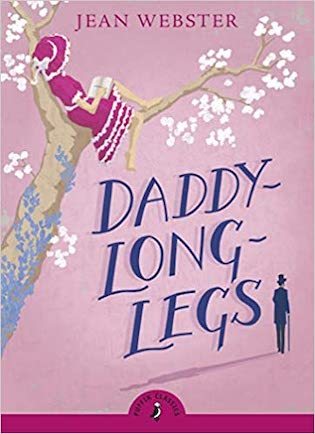
Daddy-Long-Legs on Bookshop.org* and on Amazon*
. . . . . . . . .
Although I warmed to the details of Judy’s coursework—which wars she was studying and which verbs she was conjugating — her growing identity as a writer thrilled me more. In concert with the sense that I — and only I — was the reader of this story, other than the bookish girl who made it.
“I look forward all day to evening, and then I put an ‘engaged’ on the door and get into my nice red bathrobe and furry slippers and pile all the cushions behind me on the couch, and light the brass student lamp at my elbow, and read and read and read. One book isn’t enough. I have four going at once. Just now, they’re Tennyson’s poems and Vanity Fair and Kipling’s Plain Tales and – don’t laugh – Little Women. I find that I am the only girl in college who wasn’t brought up on Little Women. I haven’t told anybody though (that would stamp me as queer).”
Judy’s letters read more like a diary because her benefactor never writes back. Throughout the book, she is reading, mostly for school but sometimes for pleasure: “Excuse me for filling my letters so full of [Robert Louis] Stevenson; my mind is very much engaged with him at present.”
And, eventually, she is writing as much as she is reading, particularly during the summer holidays: “College opens in two weeks and I shall be glad to begin work again. I have worked quite a lot this summer though—six short stories and seven poems. Those I sent to the magazines all came back with the most courteous promptitude. But I don’t mind.”
From the start, it felt like she was writing both to me and about me. Books like Lois Lowry’s Anastasia Krupnik (1979) and Norma Fox Mazer’s I, Trissy (1971) had revealed the power of intimacy in handwritten pages. Judy’s story unfolded decades earlier, but her hand-drawn, near-stick figures were as disproportioned as my own doodles, and her bookishness was recognizable and her friendships were enviable.
Spiders and titles
Judy addresses her letters to Daddy-Long-Legs because of a silhouette she has glimpsed, that of a very tall man (her benefactor), but the title had another genesis, which Alice Sanford describes:
“Five or six summers ago Miss Webster was visiting at the home of her publisher, and as they all were sitting on the porch, a daddy-long-legs dropped into her lap. ‘Oh, a daddy-long-legs,’ she exclaimed — ‘what a capital title for a book!’ and the publisher said upon her leaving, ‘Don’t forget to write the book.’”
Jean Webster didn’t take it seriously, but her publisher did:
“After receiving a mock-up ‘with the picture of a daddy-long-legs emblazoned upon it’ Jean Webster got to work. Over the next couple of years, she noodled the idea and conceived of a ‘little orphan asylum girl, Judy, who finally goes to college through the munificence of the aristocratic Jervis Pendleton, self-styled misogynist.’”
. . . . . . . . . .
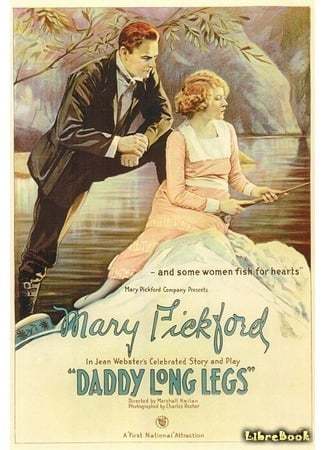
The first film version, 1919
. . . . . . . . . .
Jervis is a shadowy figure in the novel, but in later adaptations, the relationship between him and Judy is more prominent. More than a decade after I first read the book, I finally saw a film that I recognized as being adapted from it.
In between, I had seen Shirley Temple’s Curly Top (1935) but I didn’t recognize it as the same story. The first film, made by Mary Pickford in 1919, wasn’t available (likely for the best, as the orphanage scenes probably would have given me nightmares), although Canadian students studied Mary Pickford in school as dutifully as Judy studied algebra and physiology.
Rewatching the 1955 film Daddy-Long-Legs recently, I was struck by how much of it was about Jervis Pendleton, which is perhaps best explained by the fact that Fred Astaire was cast in the role, opposite Leslie Caron.
Rumor has it that he was surprised to be cast opposite a ballerina, quickly announcing: “Kid, you’re going to have to do what I do, because I sure don’t do what you do.” As Judy in the film, Leslie Caron does what Fred Astaire as Jervis does: dancing makes for better showmanship than reading or writing.
Bolstering Daddy-Long-Legs’ popularity has been a series of stage and screen productions: films in 1990 in Japan, and in 2005 in Korea; on-stage as Love from Judy in 1952 in England, as a two-person musical in California in 2009, and stage production in New York City in 2015.
But it’s the novel that holds the most appeal for me. Other readers of classic girls’ stories often count it among their favorites too, both in North America and in England (where many of Jean Webster’s novels were published, often a year or two after their American debut).
In 2005, Amanda Craig, nominated more than once for the International Women’s Fiction Prize, included it in a list of her favorite teen romances in the London Times, describing it like this: “Sweet novel made up of an adopted girl’s letters to her daddy.”
She’s not adopted and he’s not her daddy, yet this statement is no more inaccurate than the biographical note at the back of the novel that identifies Jean Webster as an orphan. The point is that Judy doesn’t feel like she belongs anywhere and her Daddy-Long-Legs helps her believe that she does. It’s a human yearning to connect: it’s what we look for in a story and it’s why I return to Jean Webster’s Daddy-Long-Legs.
Contributed by Marcie McCauley, a graduate of the University of Western Ontario and the Humber College Creative Writing Program. She writes and reads (mostly women writers!) in Toronto, Canada. And she chats about it on Buried In Print and @buriedinprint.
More about Daddy-Long-Legs by Jean Webster Read full text on Project Gutenberg Listen on Librivox Reader discussion on Goodreads Jean Webster on the Vassar Encyclopedia
. . . . . . . . .
*These are Bookshop Affiliate and Amazon Affiliate links. If a product is purchased by linking through, Literary Ladies Guide receives a modest commission, which helps maintain our site and helps it to continue growing!
The post Orphans and Boarding Schools: On rereading Daddy-Long-Legs by Jean Webster appeared first on Literary Ladies Guide.
August 21, 2021
Flint and Steel: The Tumultuous Marriage of Martha Gellhorn & Ernest Hemingway
The esteemed war correspondent Martha Gellhorn, Ernest Hemingway’s third wife, famously said, “Why should I be a footnote to somebody else’s life?” She dreaded being remembered mainly for her doomed marriage to the iconic American author. Hemingway and Gellhorn encouraged each other, supported each other, and once they separated, refused to speak of each other.
It all began when one evening, close to Christmas 1936, the young journalist and writer Martha Gellhorn went to a bar on Key West for a drink. She was with her mother, Edna, and younger brother Alfred, taking a break in the winter sun. The bar was Sloppy Joe’s, and there Martha noticed “a large, dirty man in untidy somewhat soiled white shorts and shirt,” sitting in a corner, drinking and reading his mail.
The man was Ernest Hemingway, and this fairly inauspicious meeting was the start of a relationship that lasted almost ten years. Culminating in a disastrous four-year marriage, their partnership is (in)famous for its volatility, hard drinking, and occasional violence.
But there were also times of love, happiness, and hard work in writing. The tempestuous dynamic between these two enormous literary talents continues to fascinate to this day.
. . . . . . . . .
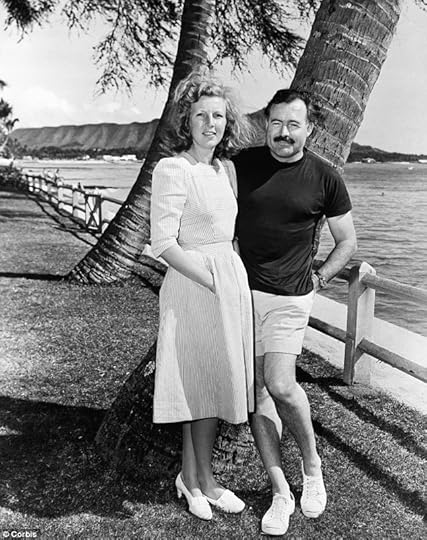
Photo of Gellhorn and Hemingway by Corbis
. . . . . . . .
When he first met Martha Gellhorn, Ernest Hemingway was living on Key West with his second wife, Pauline Pfeiffer, and three sons: John (known as Bumby), age thirteen; Patrick (nicknamed “Mexican Mouse”), age eight; and Gregory, or Gigi, who was five. Hemingway spent a lot of time fishing in the clear waters off the island and drinking in Sloppy Joe’s, but by the end of 1936 was also planning a trip to Spain to cover the civil war.
His enthusiastic support of the Republican cause had attracted the attention of the North American Newspaper Alliance, who asked him to cover the conflict for them, and he was raising money to buy ambulances as well as planning a documentary film with the Dutch director Joris Ivens.
Gellhorn, though not as well established as Hemingway, had her own accomplishments and ambitions. Her recent book, The Trouble I’ve Seen, based on her experiences of reporting the Great Depression, had received rave reviews, and she’d been hailed as the literary discovery of the decade. She was also very well traveled and aware of the worsening situation in Europe.
After their first drinks in Sloppy Joe’s, Hemingway offered to show the family around the island and, believing Martha and Alfred to be a couple rather than brother and sister, resolved to “get her away from the young punk” as soon as he could.
When Edna and Alfred went home to St Louis a week later, Gellhorn decided to stay to work on her new novel. However, instead of writing, she spent hours talking to Hemingway — about politics, about his love of Cuba, his books, and his new manuscript, which he gave her to read. She did so, “weak with envy and wonder,” but determined not to imitate the style she admired so much. She had found, she wrote to her close friend Eleanor Roosevelt, “an odd bird, very lovable and full of fire and a marvelous storyteller.”
. . . . . . . . .
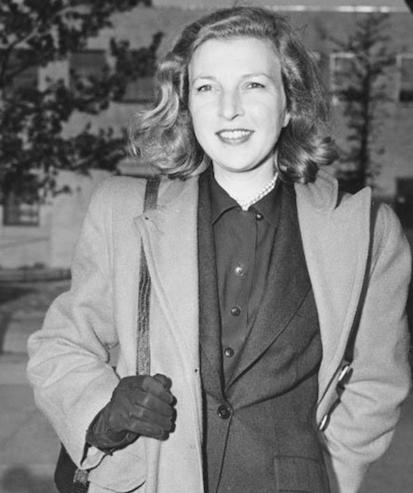 Learn more about Martha Gellhorn
Learn more about Martha Gellhorn
. . . . . . . . .
When Martha Gellhorn finally left for St. Louis in the middle of January 1937, Hemingway headed to New York to finalize his preparations for Spain. His regular letters and phone calls gave her encouragement through the long winter days, during which she forced herself to work on her novel for ten pages a day, determined to get it done as quickly as possible so that she could go to Europe herself and “get all the facts tidy.”
But by the time she arrived in New York, Hemingway was almost ready to leave for Spain. His passage was booked and, with obligations to both his documentary film and to the NANA, he had to depart without her. It took several weeks for Gellhorn to procure the required paperwork, eventually persuading a friend at Collier’s magazine to give her special correspondent status.
She sailed in March 1937, writing to a family friend, “Me, I am going to Spain with the boys. I don’t know who the boys are, but I am going with them.”
Too impatient to find a traveling companion among the several hundred men and women going to Spain as part of the International Brigades, Gellhorn set out alone from Paris with only fifty dollars and a backpack full of tinned food. By late March she was in Barcelona, crowded with soldiers and militia of all kinds, and from there made her way to Madrid.
Hemingway, already installed in two rooms in the Hotel Florida, greeted her: “I knew you’d get here, daughter, because I fixed it so you could.” Gellhorn accepted the self-congratulatory twisting of the truth with tolerance but was less understanding the next morning after she found herself locked her in her room during a bombing raid. When Hemingway finally came to let her out he explained that he had done it for her own safety, but she was furious. Later, she wrote, “I should have known at that moment what doom was.”
It didn’t, however, stop her from starting an affair. She didn’t love Hemingway, she claimed, and she wasn’t physically attracted to him, but she admired him and was grateful for his companionship and leadership amid a horrific war. Hemingway regarded himself — and was mostly regarded by others — as the foremost foreign journalist in Spain, and was able to procure supplies, including petrol, where no one else could.
He knew his way around the various fronts and was expert with a gun. As “just about the only blonde in the country,” Gellhorn felt vulnerable, although she would never have shown it. It was, she felt, better to be seen as belonging to someone.
. . . . . . . . .
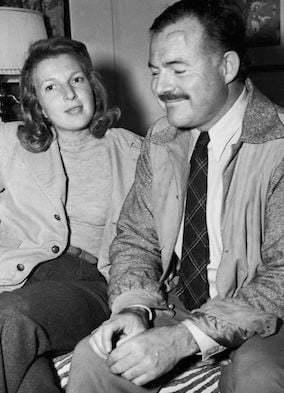
Photo: JFK Presidential Library and Museum
. . . . . . . . .
It was the first of four trips to Spain over the next two years, interspersed with periods back in America. Hemingway’s film was a success, while Gellhorn’s articles about the human cost of war, the ordinary people, and their lives on the streets were taken enthusiastically by Collier’s and The New Yorker.
Their second trip, in August 1937, was less successful. Gellhorn and Hemingway were attempting to be discreet about their relationship, mostly for Pauline’s sake, and they again traveled from New York on separate ships. By the time they arrived, two-thirds of the country lay in nationalist hands.
Madrid was becoming increasingly cold and uncomfortable, with little food to be had, and in the tough conditions, the differences between the two of them began to slide into violent arguments. Known for being a bully at times, Hemingway was capable of subjecting Gellhorn to torrents of abuse: she described one evening as “a really excellent show but the kind of show usually reserved for enemies.”
By November 8th, Gellhorn’s 29th birthday, she had heard from America that gossip was circulating about her and Hemingway, and swore never again to “get into such a thing … I am in it up to the neck.” She dreaded returning to New York.
Meanwhile, with nothing much happening at the front, Hemingway had started work on a play called The Fifth Column, based largely on his experiences in Spain and including a not-entirely flattering portrait of Martha as Dorothy Bridges, the heroine, whose main feature was her legs and who had “men, affairs, abortions, ambitions.”
Christmas 1937 was spent in America, after a nasty incident in Paris when Pauline, having traveled to confront Hemingway about Gellhorn, threatened to jump off their hotel balcony. Hemingway, with characteristic understatement, confided in Max Perkins that he was in a “gigantic jam” yet returned once more to Spain with Gellhorn in April 1938, leaving an increasingly desperate Pauline in America.
. . . . . . . . .
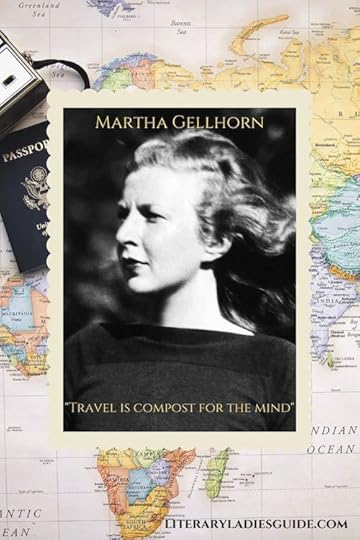
Martha Gellhorn: Quotes from a Courageous Woman
. . . . . . . . .
By the end of 1938, Hemingway was back in Key West, trying to adapt back into family life with Pauline, but it was evident to visitors that he was unhappy. His brother Leicester noted that he was drinking an average of fifteen Scotch and sodas each day. He eventually retreated to one of his favorite islands, Cuba, to write, and Gellhorn joined him in the early spring of 1939.
She found him split between two hotel rooms in Havana, one for sleeping and one for writing, disheveled as usual, stockpiling food and surrounded by deep-sea fishing tackle (the waters of the Gulf were only half an hour away by boat). Having tolerated his squalid way of hotel living during the war in Spain, Gellhorn found that she couldn’t bear it in Cuba, and determined to find them somewhere more permanent to live.
She found a house in the village of San Francisco de Paula, not far from Havana. A one-story colonial Spanish building called Finca Vigía, it was set in fifteen acres of grounds that had overgrown to jungle density in the tropical heat.
The house hadn’t been lived in for years and needed significant cleaning and renovation, but Gellhorn saw its potential. Their move to the Finca effectively marked the end of Hemingway’s marriage to Pauline.
At first, the two were happy in their new home, writing constantly and leading a disciplined life. Hemingway, who had started work on For Whom The Bell Tolls, rose early and started writing before dawn, using their sunny bedroom as a study.
Gellhorn admired the way he fiercely protected his writing time despite everything there was to do around the house: “He has,” she wrote to a friend, “been about as much use as a stuffed squirrel, but he is turning out a beautiful story. And nothing on earth besides matters to him …”
She was having trouble, per usual, with her book (it would later be published as The Stricken Field), worried that her writing was flat and uninspiring. Reading Hemingway’s work made things worse: she saw her own as “without magic” while his flowed “like the music of a flute.” But she was happy in the Finca, surrounded by the exotic plants she loved, and the view of the sea.
With a break in Wyoming and Idaho over the fall, they continued this routine into the new year, writing in the mornings (Hemingway now tucked up in bed because of the exceptionally cold weather), playing tennis in the afternoons, and, about once a week, driving into Havana for a long night of hard drinking at the Floridita, Hemingway’s favorite bar.
Hemingway’s sons came for a successful visit in March 1940. They liked Gellhorn, calling her “The Marty,” and she relished becoming an instant mother to three good-looking, intelligent, yet very different boys.
Gradually, the differences between them began escalating once again into arguments, just as they had done in Spain. Hemingway found the bad news from Europe intrusive, and eventually banned their radio from the house altogether. Gellhorn found his disinterest annoying and his commitment to his work overbearing.
One letter from Hemingway at this time is a profuse tract of apology, begging her forgiveness for having been “thoughtless, egotistic, mean-spirited and unhelpful.” It was one of the few times he admitted to, and apologized for, any wrongdoing.
A marriage of flint and steel
In September 1940, For Whom The Bell Tolls was published. It sold — as Hemingway put it — “like frozen Daiquiris in hell.” After a stint alone in New York for the initial round of publication events, Hemingway took Gellhorn back to Sun Valley with his sons. They spent happy weeks hunting, riding, fishing, and playing tennis, and became engaged after Hemingway’s divorce from Pauline was finalized.
Gellhorn wore a diamond and sapphire ring she described as “snappy as hell.” Although she had some doubts about marriage (upsetting Hemingway, who wrote that she had given him a “good sound busted heart”) photos from this time show them both happy, windswept, and smiling.
On November 21, 1940 they were married in the dining room of the Union Pacific Railroad in Cheyenne, Wyoming. Several newspapers covered the wedding, with one reporter describing it as a union “of flint and steel,” though which one of them was which was never made clear.
“Honeymoon” in China
Many years later, when Gellhorn was nearly seventy, she wrote a book of the “horror journeys” of her life, Travels With Myself and Another. The book is full of darkly comic stories of terrible discomfort, embarrassing situations, and all the gory details of traveling in strange places with few modern comforts.
She included their “honeymoon trip to China, entitled “Mr. Ma’s Tigers,” one of the funniest in the collection and notable for its tone of affection and self-mockery. Collier’s had asked her to travel to the Far East to cover the war there, and Hemingway, despite grave misgivings, agreed to join her for part of the trip and write some articles for PM magazine. The trip was to start on the Burma Road, not long after their wedding, and Hemingway insisted on calling it their honeymoon.
It started badly, with rolling Pacific waves which made them seasick all the way to Hawaii. Although things started to improve in Hong Kong, where Hemingway found new friends to drink with and delighted in setting off firecrackers in their hotel room, there was the ever-present danger of Japanese bombing, and health concerns, including a prevalence of cholera.
When the couple got permission to travel to the front line, they made the journey in an ancient truck, a derelict boat that let in water, and ponies so small that Hemingway pointed out he could walk and ride at the same time. It was also, as Gellhorn noted, the “mosquito center of the world.”
One night, lying on a board in wet clothes, besieged by flies and mosquitoes, she said, “I want to die.” Hemingway replied, “Too late. Who wanted to come to China?” But when she and Hemingway parted in Rangoon, he wrote, “I am lost without you … with you I have so much fun even on such a lousy trip.”
The Crook Shop, and a Caribbean “journey from hell”
Back in Cuba, Martha settled down to edit the proofs of a collection of stories, The Heart of Another, while Hemingway spent more and more time fishing in the Gulf on his boat, the Pilar. Martha enjoyed joining him when she wasn’t working, and Hemingway told Max Perkins that he was happy with her, that she was just what he needed, and that she had told him she was now going to stop traveling and stay at home.
But the bombing of Pearl Harbor and the entrance of America into the war made them both restless. Still unwilling to travel to Europe, Hemingway started to gather stories for a war anthology, while both he and Gellhorn were intrigued by the idea of setting up a kind of counter-intelligence group in Cuba, similar to the ‘Fifth Column’ of Madrid in the Spanish Civil War.
Hemingway proposed to recruit informants from among his friends in the Havana bars, and, somewhat bizarrely, to equip the Pilar with grenades and machine guns in order to hunt and destroy enemy submarines that might be cruising the Gulf (his idea was to lure them into raising their conning towers, before lobbing grenades down the opening).
In a turn of events that seems ludicrous today, he succeeded in recruiting an eight-man crew and persuaded the FBI to contribute $500 a month for running costs. “Friendless” was the official name of the operation, but it was more often known as the Crook Shop.
As the Crook Shop took over the Finca, and the parties and drinking sessions began to last well into the morning hours, Gellhorn grew more and more impatient. She and Hemingway began to quarrel regularly, even about writing, so when Collier’s suggested that she do some traveling around the Caribbean and write about preparations for war, she was delighted.
But the assignment became another of her journeys from hell. It started in Puerto Rico, which had been turned into a huge naval base, and continued from St. Thomas to Antigua. Gellhorn was held up by hurricanes and heavy rain; she became violently seasick; and one night, while she slept out the bad weather on Saba, she awoke to find that the boat crew had slipped away in the night, leaving her marooned on an island with very few facilities.
She finally made her way off with a derelict motor launch, paying $60 to persuade the elderly captain to take her to Antigua. At her next destination, Surinam, she fractured a wrist and caught dengue fever.
Throughout her trip, Hemingway sent her several letters, most of them loving and intimate, full of life at the Finca and the domestic squabbles of the cats that had taken up residence in the gardens. Responding to a complaint from Gellhorn about life in Cuba, he wrote, “Boy can you hit. Can you hit and do you know where the heart of another lives…”
It was clear on her return that Hemingway had missed her, and Gellhorn spoke of becoming a “good little wife” and giving up reporting so as not to have to leave him again. For a short time, over the summer, they were genuinely happy.
War at home and in Europe
As time went on, Gellhorn grew increasingly tired of Hemingway’s spying activities and heavy drinking. He had quarreled with most of his writer friends and was spending more and more time at sea; on the few occasions he was at the Finca he was moody, depressed, and occasionally violent.
She was finding his slovenly way of living almost unbearable, while he told her that she was obsessed with cleanliness. One night, after a fight about his drunken driving on their way back from a night in Havana, Gellhorn took the wheel of his beloved Lincoln Continental and drove it slowly straight into a tree. She got out and walked back to the Finca, leaving Hemingway with the wrecked car.
Finally, despite the lack of military accreditation for women journalists, and despite all the dangers, Gellhorn decided to go to Europe. She tried to persuade Hemingway to go with her — even after all their arguments, there were still moments of tenderness — but he was reluctant to leave the Finca and the Pilar. From New York, she wrote, “You belong to me … We have a good wide life ahead of us. And I will try to be beautiful when I am old, and if I can’t do that I will try to be good. I love you very much.”
Gellhorn arrived in London in fall 1943. During the weeks that followed, she wrote several long and loving letters to Hemingway, full of the war in London and the people she was meeting, and still encouraging him to join her. Hemingway, though, was drinking heavily alone at the Finca, and wrote less and less often.
To Gellhorn’s mother, with whom he got on well, he wrote that he felt he was dying a little every day. Jealous of Gellhorn but unwilling to join her, he wrote to Max Perkins that he hadn’t “done a damned thing I wanted to do now for well over two years….but then I guess no one else has either except Martha who does exactly what she wants to do as willfully as any spoiled child…”
After six months, despite being desperate not to miss the French landings, Gellhorn decided to return, set on the idea of “blast[ing] him loose from Cuba” and bringing him back to Europe.
“I am wondering now if it ever really worked …”
This time, her return was not so happy. They fought over everything — over the house, over writing, over money -—and Hemingway went so far as to write to Gellhorn’s mother saying that he felt she had become unbalanced during her time in Europe.
“Nothing outside of herself interests her very much … she seems mentally unbalanced, maybe just borderline …” Then, out of the blue, Hemingway announced that he had decided to go to Europe after all, and would be writing articles for Collier’s — a move that effectively jeopardized Gellhorn’s position at the magazine, since officially it was allowed to have only one accredited journalist at the front.
Even more galling for Gellhorn was the fact that, after agreeing to write an article on RAF pilots, Hemingway was given a coveted seat on a plane heading for London, and told her that no women were allowed on board. Later, it turned out that the actress Gertrude Lawrence was also a passenger.
Angry but undeterred, Gellhorn eventually found a place on a Norwegian freighter. On the twenty-day Atlantic crossing, she had plenty of time for reflection, and in letters to friends made clear that she felt the marriage was over:
“He is a good man … He is however bad for me, sadly enough, or maybe wrong for me is the word; and I am wrong for him … I am wondering now if it ever really worked …We quarreled too much I suppose … It is all sickening and I am sad to death …”
When Gellhorn met up with Hemingway in London, she found him once again installed in a hotel, surrounded by hangers-on and drinking heavily. Instead of welcoming her, he seemed to delight in goading her, reducing her to tears and embarrassing those they were with, and one evening stood her up for dinner in favor of Mary Welsh, a young American journalist for the Daily Express. From that night, Gellhorn considered their marriage over.
Divorce and aftermath
It was not an amicable separation. Hemingway was not accustomed to being left by women, and even his sons were not spared his furious attempts to portray himself as the one who had wanted to end it. He wrote to Patrick that he had “torn up my tickets on her and would be glad never to see her again.”
Hemingway and Gellhorn met only twice more: once by accident in Paris in 1944, and later in London to finalize details of their divorce, which came through at the end of 1945.
It was a sad end to a troubled relationship. Later, Hemingway’s youngest son Gregory would say that Gellhorn had been driven away by his father’s bullish behavior and egotism. Gellhorn wrote to her mother that, “A man must be a very great genius to make up for being such a loathsome human being.”
After that, she refused to talk about Hemingway at all. Even in Travels With Myself and Another he was referred to only as UC, and on hearing of his suicide in 1961, her only comment was that she understood why he had done it.
Hemingway, initially outspoken and blustering about their separation, also fell silent on the subject. It’s ironic, then, that speculation, gossip, and fascination with their unconventional love story continued long after they had separated, and survives today in books, biographies, and the sensationalized 2012 film, Hemingway and Gellhorn, 2012.
Further reading
Travels With Myself And Another by Martha Gellhorn (1978)The Hemingway Women by Bernice Kert (1983)Selected Letters 1917-1961 by Ernest Hemingway, edited by Carlos Baker (2003)Martha Gellhorn: A Life by Caroline Moorehead (2004)Ernest Hemingway: A Biography by Mary Dearborn (2018)Contributed by Elodie Barnes. Elodie is an author, poet, and artist with a serious case of wanderlust. She is originally from the UK, but has spent time abroad in Europe, the United States, and the Bahamas.
When not traveling or working on her current projects — a chapbook of poetry, “The Cabinet of Lost Things,” and a novel based on the life of modernist writer and illustrator Djuna Barnes — she can be found with her nose in a book, daydreaming her way back to 1920s Paris. Visit her on the web at Elodie Rose Barnes.
The post Flint and Steel: The Tumultuous Marriage of Martha Gellhorn & Ernest Hemingway appeared first on Literary Ladies Guide.
August 15, 2021
Time Out of Mind by Rachel Field (1935)
Time Out of Mind by Rachel Field (1894 – 1942) was this American author’s first novel for adults, published in 1935. The following year, it won the National Book Award.
Field had been writing prose and poetry for children and young adults, as well as plays, since 1924. Her major breakthrough, up until Time Out of Mind was released, was the children’s book Hitty: Her First Hundred Years (1929), which won the Newbery Medal.
The story in Time Out of Mind is narrated in the first person by Kate Fernald. Kate, described as a hardy, “square-rigged” girl, comes to the Maine coast home of the Fortune family at the age of ten. She accompanies her mother, who serves as the housekeeper, and grows up with brother and sister Nat and Clarissa Fortune, forging a bond that would last a lifetime. The book begins:
“I was never one to begrudge people their memories. From a child I would listen when they spoke of the past. Mother often remarked upon it as strange in one so young. But I think I must have guessed, even then, at what is now clear to me, though I have not skill enough with words to make it plain. For I know that nothing can be so sweet as remembered joy, and nothing so bitter as despair that no longer has the power to hurt us. And to me the past seems like nothing so much as one of those shells that used to be on every mantelpiece of sea-faring families years ago along the coast of Maine.”
. . . . . . . . .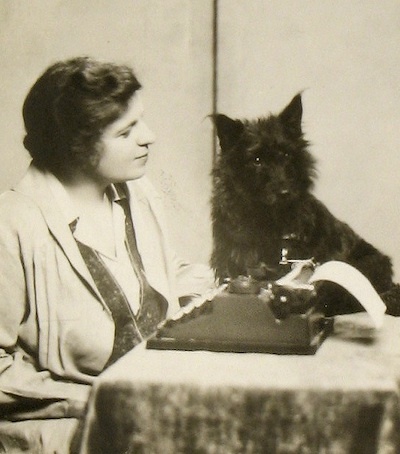
Learn more about Rachel Field
. . . . . . . . .
This award-winning novel earned universal praise at the time of its publication; though it’s no longer well known, contemporary readers seem to enjoy it as well. Here are two 1935 reviews of a story worthy of rediscovery:
Maine is Scene of Rachel Field’s Nostalgic SagaFrom the original review in the St. Louis Globe-Democrat, April 27, 1935: The cycle of the seasons, spring and summer, autumn and winter, along the blue Penobscot Bay, forms the radiant background for Rachel Fields’s nostalgic saga of Maine folks and tall-masted sailing ships.
The pungent odor of the majestic pines and the harbors about which the fortune of a great shipping family eddies, permeates each page of Time Out of Mind, a shining example of the renaissance of the traditional romantic novel.
From these pages there arises another stalwart “square-rigged” figure, Kate Fernald, who belongs alongside Mary Peters and others of her caliber in the Maine hall of fictional fame.
Kate, daughter of the housekeeper, came to Fortune’s Folly, the great white-columned home of the Fortune family when she was ten years old. As an old woman, she draws upon her storehouse of poignant memories to relate the story of the disintegration of the Fortunes, ship-builders for three generations.
Major Fortune, heir to the tradition that “there’s no port too far for Fortune pines to cast their shadows,” was too blindly willful to read the doom of canvas in the encroachment of steam. His failure to read this handwriting on the wall spelled disaster for his fortune and his family.
Rissa (short for Clarissa), the arrogant and lovely daughter, and Nat, his son, whose physical unfitness to step into the Major’s shoes and love of music rankled his father.
There is a sense of foreboding at the torchlight launching of the Rainbow, the last of the Fortune ships to sail the seas, and well there might have been for the sailing of the Rainbow marked the beginning of the Fortune’s decline.
Trembling, white-faced twelve-year-old Nat is forced by his father to make a hand on the maiden voyage, to return a year later permanently broken in spirit and health. Rissa and Kate Fernald, equally loving Nat, scheme to protect him from the Major. This jealous struggle to draw him within the circle of love continues through the story.
Rissa and Nat escape from the stern shadow of the Folly to Paris. The Major, never recovered from the fate of the Rainbow, is laid to rest in the Little Prospect Cemetery, but Kate Fernald stays on, happy in the daily chores, scouring the Maine countryside for ripe red berries and russet apples, suffering an occasional twinge from the failure of her plan for marriage.
Kate still harbors a notion that Rissa, Nat, and she will be together again in the big house, the grandeur of which is slowly fading in the shadow of the pert modern homes of the summer visitors that are slowly and surely crowding the acres of the Fortune shoreline.
In the tragic climax of Nat and Rissa’s return, Kate’s strength in the face of failure is a memorable characterization and the resultant lump in the throat, the product of Miss Field’s word artistry, might be termed senile sentimentality by the foes of romanticism, but we prefer to call it just a natural involuntary reaction to the author’s force and skill.
In the end, Kate Fernald hears the strike of the quaint French clock, symbolic of the flow of time through the years and all that remains to her of the Fortune’s possessions, and she finds herself left alone “to fill the last pages of the Major’s old logbooks.”
Strong in color with a quiet rhythm all its own, Time Out of Mind is a sturdy tale, as fresh and clean as the tang of a New England breeze.
. . . . . . . . .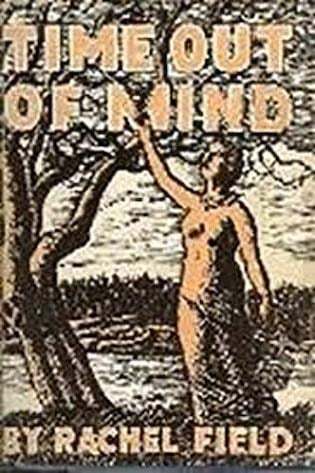
Time Out of Mind by Rachel Field on Amazon*
. . . . . . . . .
From The Daily Times (Davenport, Iowa), April 6, 1935: In the words of Major Fortune, last of the ship-building Fortunes whose vessels for generations had been known the world around, Kate Fernald, who tells the story in Time Out of Mind, was “a square-rigged girl” and “a four-square girl.”
When Kate was only ten years old, her father died and her mother gave up the farm where they had lived. The two came to “Fortune’s Folly,” the great house of Major Fortune, where Kate’s mother took the position of housekeeper. From that time on, there grew in this simple, warmhearted country girl a conflict between two widely divergent ways of life — the reckless and lordly manner that came to a Fortune, and the sweet and lowly, the good and honest path that so many of the world’s toilers take.
Yet Kate had no pretense about her, and the conflict wasn’t due to any importance she stressed upon the highborn — rather, it was a conflict in loyalties. She was faithful to her own kind, but she was faithful to these Fortunes too, even to the Major who had been so cruel and unjust to his son, Nat, simply because the boy had a taste for music instead of ships.
Kate was only a child when she came to Fortune’s Folly and she wasn’t regarded as a servant, or even as the daughter of a servant, yet there was a kind of barrier between Kate and Nat and Rissa, the daughter of the Major, just the same. They played together, they confided in each other, they formed a secret society to outwit the Major so that Nat could practice his beloved music.
But Kate as well as the Fortune children know that they belonged to different worlds. Nat was less conscious of this than Rissa, indeed. Nat was so absorbed in his music that he was scarcely aware of being a Fortune, certainly, he was not the conventional son of a line of strong men. No, he was weak and puny and had a bad heart. He was marked for glory, as a fortune-teller predicted, but he was also marked for death.
The big-souled Kate, the narrator of this story, looked backward as old people do, remembering feeling, sensing every detail of the scene, which is the Maine coast, recalling words, inflections, gestures of persons she had known in her girlhood and young womanhood.
As she relates this tale, she has had a job in the post office of Little Prospect, and for thirty years has led an obscure and blameless life with a modest role in the community.
Once in a while, someone who knows the strange story of Nat’s death, and about his having come home to stay at Fortune’s Folly when Kate was there alone; a broken-down Nat it was who had found fame but not happiness.
. . . . . . . . .

The Field House by Robin Clifford Wood —
Rediscovering Rachel Field
. . . . . . . . .
Once in a while, a garbled old piece of gossip will be repeated. But those who hear the talk do not pay much heed; it is difficult to get excited about the irregular romance of a person who is very old. It all happened so long ago, one will say; perhaps it never happened.
It was a happy thought by Rachel Field to have Kate herself tell the story, because by this means the author achieved a character of great significance. Kate unconsciously reveals her sterling qualities — her bravery, goodness, independence, and capacities for loving, giving, and serving.
Kate herself told Nat once that “it’s better to feel something too much, even if it spills over.” She thought it was “better than drying up slow from the inside.” And it is a remembered abundance of love and a remembered desire to spend herself, even recklessly, that kept Kate from being a tragic spinster and letting those free-flowing founts of her being dry up.
This is a book that anyone can enjoy and it’s recommended unreservedly to all who appreciate the land and the trees and the movements of the tides and for characters who are consistent with their heritage and upbringing. It is a book filled with the mellowness, the bright sun, and the wild rain that natives of the Maine coast know.
It is filled with a repetition of nature’s warmth and growth and storm, nature’s occasional flashes of cruelty. Rachel Field depicts these places and their people so surely and so truly.
. . . . . . . . . .
*This is an Amazon Affiliate link. If a product is purchased by linking through, Literary Ladies Guide receives a modest commission, which helps maintain our site and helps it to continue growing!
The post Time Out of Mind by Rachel Field (1935) appeared first on Literary Ladies Guide.
August 13, 2021
The Dilettante by Edith Wharton (1903 short story-full text)
The Dilettante by Edith Wharton is a short story that was first published in Harper’s Magazine in 1903, and then was part of The Descent of Man and Other Stories in 1904. Close on the heels of this short story collection, Wharton’s very successful first novel, The House of Mirth, was published in 1905, establishing her as a major figure in American literature.
The story centers around the relationship of Mrs. Vervain and Thursdale. Mrs. Vervain is in love with him, though he considers her just a friend (this possibly echoes some of Wharton’s own relationships with men). Arrogantly, Thursdale (the dilettante of the story’s title) even considers Mrs. Vervain something of his own creation. He describes her as “the finest material to work on,” almost as if she is merely clay in his hands.
The dictionary defines a dilettante as “a person who cultivates an area of interest, such as the arts, without real commitment or knowledge.”
It’s worth considering being a dilettante applies to Thursdale and the women in his life. He looks back on attempts at commitment as mistakes, comparing them to “long walks back from a picnic when one has to carry all the crockery one has finished using.”
The Dilettante, which is in the public domain, is reprinted here in full. Some of the long paragraphs have been broken up for easier readability. Edith Wharton’s The Descent of Man is not to be confused, of course, with Charles Darwin’s book of the same title.
The Dilettante by Edith Wharton
It was on an impulse hardly needing the arguments he found himself advancing in its favor, that Thursdale, on his way to the club, turned as usual into Mrs. Vervain’s street.
The “as usual” was his own qualification of the act; a convenient way of bridging the interval—in days and other sequences—that lay between this visit and the last. It was characteristic of him that he instinctively excluded his call two days earlier, with Ruth Gaynor, from the list of his visits to Mrs. Vervain: the special conditions attending it had made it no more like a visit to Mrs. Vervain than an engraved dinner invitation is like a personal letter.
Yet it was to talk over his call with Miss Gaynor that he was now returning to the scene of that episode; and it was because Mrs. Vervain could be trusted to handle the talking over as skillfully as the interview itself that, at her corner, he had felt the dilettante’s irresistible craving to take a last look at a work of art that was passing out of his possession.
On the whole, he knew no one better fitted to deal with the unexpected than Mrs. Vervain. She excelled in the rare art of taking things for granted, and Thursdale felt a pardonable pride in the thought that she owed her excellence to his training.
Early in his career Thursdale had made the mistake, at the outset of his acquaintance with a lady, of telling her that he loved her and exacting the same avowal in return. The latter part of that episode had been like the long walk back from a picnic, when one has to carry all the crockery one has finished using: it was the last time Thursdale ever allowed himself to be encumbered with the debris of a feast.
He thus incidentally learned that the privilege of loving her is one of the least favors that a charming woman can accord; and in seeking to avoid the pitfalls of sentiment he had developed a science of evasion in which the woman of the moment became a mere implement of the game.
He owed a great deal of delicate enjoyment to the cultivation of this art. The perils from which it had been his refuge became naively harmless: was it possible that he who now took his easy way along the levels had once preferred to gasp on the raw heights of emotion?
Youth is a high-colored season; but he had the satisfaction of feeling that he had entered earlier than most into that chiar’oscuro of sensation where every half-tone has its value.
As a promoter of this pleasure no one he had known was comparable to Mrs. Vervain. He had taught a good many women not to betray their feelings, but he had never before had such fine material to work in.
She had been surprisingly crude when he first knew her; capable of making the most awkward inferences, of plunging through thin ice, of recklessly undressing her emotions; but she had acquired, under the discipline of his reticences and evasions, a skill almost equal to his own, and perhaps more remarkable in that it involved keeping time with any tune he played and reading at sight some uncommonly difficult passages.
It had taken Thursdale seven years to form this fine talent; but the result justified the effort. At the crucial moment she had been perfect: her way of greeting Miss Gaynor had made him regret that he had announced his engagement by letter.
It was an evasion that confessed a difficulty; a deviation implying an obstacle, where, by common consent, it was agreed to see none; it betrayed, in short, a lack of confidence in the completeness of his method. It had been his pride never to put himself in a position which had to be quitted, as it were, by the back door; but here, as he perceived, the main portals would have opened for him of their own accord.
All this, and much more, he read in the finished naturalness with which Mrs. Vervain had met Miss Gaynor. He had never seen a better piece of work: there was no over-eagerness, no suspicious warmth, above all (and this gave her art the grace of a natural quality) there were none of those damnable implications whereby a woman, in welcoming her friend’s betrothed, may keep him on pins and needles while she laps the lady in complacency.
So masterly a performance, indeed, hardly needed the offset of Miss Gaynor’s door-step words—”To be so kind to me, how she must have liked you!”—though he caught himself wishing it lay within the bounds of fitness to transmit them, as a final tribute, to the one woman he knew who was unfailingly certain to enjoy a good thing.
It was perhaps the one drawback to his new situation that it might develop good things which it would be impossible to hand on to Margaret Vervain.
The fact that he had made the mistake of underrating his friend’s powers, the consciousness that his writing must have betrayed his distrust of her efficiency, seemed an added reason for turning down her street instead of going on to the club. He would show her that he knew how to value her; he would ask her to achieve with him a feat infinitely rarer and more delicate than the one he had appeared to avoid.
Incidentally, he would also dispose of the interval of time before dinner: ever since he had seen Miss Gaynor off, an hour earlier, on her return journey to Buffalo, he had been wondering how he should put in the rest of the afternoon. It was absurd, how he missed the girl….Yes, that was it; the desire to talk about her was, after all, at the bottom of his impulse to call on Mrs. Vervain!
It was absurd, if you like—but it was delightfully rejuvenating. He could recall the time when he had been afraid of being obvious: now he felt that this return to the primitive emotions might be as restorative as a holiday in the Canadian woods. And it was precisely by the girl’s candor, her directness, her lack of complications, that he was taken.
The sense that she might say something rash at any moment was positively exhilarating: if she had thrown her arms about him at the station he would not have given a thought to his crumpled dignity. It surprised Thursdale to find what freshness of heart he brought to the adventure; and though his sense of irony prevented his ascribing his intactness to any conscious purpose, he could but rejoice in the fact that his sentimental economies had left him such a large surplus to draw upon.
Mrs. Vervain was at home—as usual. When one visits the cemetery one expects to find the angel on the tombstone, and it struck Thursdale as another proof of his friend’s good taste that she had been in no undue haste to change her habits.
. . . . . . . . .
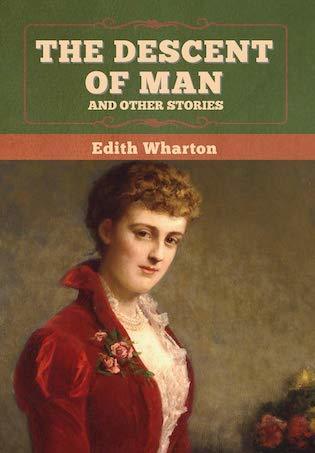
The Descent of Man and Other Stories on Amazon*
. . . . . . . . .
The whole house appeared to count on his coming; the footman took his hat and overcoat as naturally as though there had been no lapse in his visits; and the drawing-room at once enveloped him in that atmosphere of tacit intelligence which Mrs. Vervain imparted to her very furniture.
It was a surprise that, in this general harmony of circumstances, Mrs. Vervain should herself sound the first false note.
“You?” she exclaimed; and the book she held slipped from her hand.
It was crude, certainly; unless it were a touch of the finest art. The difficulty of classifying it disturbed Thursdale’s balance.
“Why not?” he said, restoring the book. “Isn’t it my hour?” And as she made no answer, he added gently, “Unless it’s some one else’s?”
She laid the book aside and sank back into her chair. “Mine, merely,” she said.
“I hope that doesn’t mean that you’re unwilling to share it?”
“With you? By no means. You’re welcome to my last crust.”
He looked at her reproachfully. “Do you call this the last?”
She smiled as he dropped into the seat across the hearth. “It’s a way of giving it more flavor!”
He returned the smile. “A visit to you doesn’t need such condiments.”
She took this with just the right measure of retrospective amusement.
“Ah, but I want to put into this one a very special taste,” she confessed.
Her smile was so confident, so reassuring, that it lulled him into the imprudence of saying, “Why should you want it to be different from what was always so perfectly right?”
She hesitated. “Doesn’t the fact that it’s the last constitute a difference?”
“The last—my last visit to you?”
“Oh, metaphorically, I mean—there’s a break in the continuity.”
Decidedly, she was pressing too hard: unlearning his arts already!
“I don’t recognize it,” he said. “Unless you make me—” he added, with a note that slightly stirred her attitude of languid attention.
She turned to him with grave eyes. “You recognize no difference whatever?”
“None—except an added link in the chain.”
“An added link?”
“In having one more thing to like you for—your letting Miss Gaynor see why I had already so many.” He flattered himself that this turn had taken the least hint of fatuity from the phrase.
Mrs. Vervain sank into her former easy pose. “Was it that you came for?” she asked, almost gaily.
“If it is necessary to have a reason—that was one.”
“To talk to me about Miss Gaynor?”
“To tell you how she talks about you.”
“That will be very interesting—especially if you have seen her since her second visit to me.”
“Her second visit?” Thursdale pushed his chair back with a start and moved to another. “She came to see you again?”
“This morning, yes—by appointment.”
He continued to look at her blankly. “You sent for her?”
“I didn’t have to—she wrote and asked me last night. But no doubt you have seen her since.”
Thursdale sat silent. He was trying to separate his words from his thoughts, but they still clung together inextricably. “I saw her off just now at the station.”
“And she didn’t tell you that she had been here again?”
“There was hardly time, I suppose—there were people about—” he floundered.
“Ah, she’ll write, then.”
He regained his composure. “Of course she’ll write: very often, I hope. You know I’m absurdly in love,” he cried audaciously.
She tilted her head back, looking up at him as he leaned against the chimney-piece. He had leaned there so often that the attitude touched a pulse which set up a throbbing in her throat. “Oh, my poor Thursdale!” she murmured.
“I suppose it’s rather ridiculous,” he owned; and as she remained silent, he added, with a sudden break—”Or have you another reason for pitying me?”
Her answer was another question. “Have you been back to your rooms since you left her?”
“Since I left her at the station? I came straight here.”
“Ah, yes—you could: there was no reason—” Her words passed into a silent musing.
Thursdale moved nervously nearer. “You said you had something to tell me?”
“Perhaps I had better let her do so. There may be a letter at your rooms.”
“A letter? What do you mean? A letter from her? What has happened?”
His paleness shook her, and she raised a hand of reassurance. “Nothing has happened—perhaps that is just the worst of it. You always hated, you know,” she added incoherently, “to have things happen: you never would let them.”
“And now—?”
“Well, that was what she came here for: I supposed you had guessed. To know if anything had happened.”
“Had happened?” He gazed at her slowly. “Between you and me?” he said with a rush of light.
The words were so much cruder than any that had ever passed between them that the color rose to her face; but she held his startled gaze.
“You know girls are not quite as unsophisticated as they used to be. Are you surprised that such an idea should occur to her?”
His own color answered hers: it was the only reply that came to him.
Mrs. Vervain went on, smoothly: “I supposed it might have struck you that there were times when we presented that appearance.”
He made an impatient gesture. “A man’s past is his own!”
“Perhaps—it certainly never belongs to the woman who has shared it. But one learns such truths only by experience; and Miss Gaynor is naturally inexperienced.”
“Of course—but—supposing her act a natural one—” he floundered lamentably among his innuendoes—”I still don’t see—how there was anything—”
“Anything to take hold of? There wasn’t—”
“Well, then—?” escaped him, in crude satisfaction; but as she did not complete the sentence he went on with a faltering laugh: “She can hardly object to the existence of a mere friendship between us!”
“But she does,” said Mrs. Vervain.
Thursdale stood perplexed. He had seen, on the previous day, no trace of jealousy or resentment in his betrothed: he could still hear the candid ring of the girl’s praise of Mrs. Vervain. If she were such an abyss of insincerity as to dissemble distrust under such frankness, she must at least be more subtle than to bring her doubts to her rival for solution.
The situation seemed one through which one could no longer move in a penumbra, and he let in a burst of light with the direct query: “Won’t you explain what you mean?”
Mrs. Vervain sat silent, not provokingly, as though to prolong his distress, but as if, in the attenuated phraseology he had taught her, it was difficult to find words robust enough to meet his challenge. It was the first time he had ever asked her to explain anything; and she had lived so long in dread of offering elucidations which were not wanted, that she seemed unable to produce one on the spot.
At last she said slowly: “She came to find out if you were really free.”
Thursdale colored again. “Free?” he stammered, with a sense of physical disgust at contact with such crassness.
“Yes—if I had quite done with you.” She smiled in recovered security. “It seems she likes clear outlines; she has a passion for definitions.”
“Yes—well?” he said, wincing at the echo of his own subtlety.
“Well—and when I told her that you had never belonged to me, she wanted me to define my status—to know exactly where I had stood all along.”
Thursdale sat gazing at her intently; his hand was not yet on the clue. “And even when you had told her that—”
“Even when I had told her that I had had no status—that I had never stood anywhere, in any sense she meant,” said Mrs. Vervain, slowly—”even then she wasn’t satisfied, it seems.”
He uttered an uneasy exclamation. “She didn’t believe you, you mean?”
“I mean that she did believe me: too thoroughly.”
“Well, then—in God’s name, what did she want?”
“Something more—those were the words she used.”
“Something more? Between—between you and me? Is it a conundrum?” He laughed awkwardly.
“Girls are not what they were in my day; they are no longer forbidden to contemplate the relation of the sexes.”
“So it seems!” he commented. “But since, in this case, there wasn’t any—” he broke off, catching the dawn of a revelation in her gaze.
“That’s just it. The unpardonable offence has been—in our not offending.”
He flung himself down despairingly. “I give it up!—What did you tell her?” he burst out with sudden crudeness.
“The exact truth. If I had only known,” she broke off with a beseeching tenderness, “won’t you believe that I would still have lied for you?”
“Lied for me? Why on earth should you have lied for either of us?”
“To save you—to hide you from her to the last! As I’ve hidden you from myself all these years!” She stood up with a sudden tragic import in her movement. “You believe me capable of that, don’t you? If I had only guessed—but I have never known a girl like her; she had the truth out of me with a spring.”
“The truth that you and I had never—”
“Had never—never in all these years! Oh, she knew why—she measured us both in a flash. She didn’t suspect me of having haggled with you—her words pelted me like hail. ‘He just took what he wanted—sifted and sorted you to suit his taste. Burnt out the gold and left a heap of cinders. And you let him—you let yourself be cut in bits’—she mixed her metaphors a little—’be cut in bits, and used or discarded, while all the while every drop of blood in you belonged to him! But he’s Shylock—and you have bled to death of the pound of flesh he has cut out of you.’ But she despises me the most, you know—far the most—” Mrs. Vervain ended.
The words fell strangely on the scented stillness of the room: they seemed out of harmony with its setting of afternoon intimacy, the kind of intimacy on which at any moment, a visitor might intrude without perceptibly lowering the atmosphere. It was as though a grand opera-singer had strained the acoustics of a private music-room.
Thursdale stood up, facing his hostess. Half the room was between them, but they seemed to stare close at each other now that the veils of reticence and ambiguity had fallen.
His first words were characteristic. “She does despise me, then?” he exclaimed.
“She thinks the pound of flesh you took was a little too near the heart.”
He was excessively pale. “Please tell me exactly what she said of me.”
“She did not speak much of you: she is proud. But I gather that while she understands love or indifference, her eyes have never been opened to the many intermediate shades of feeling. At any rate, she expressed an unwillingness to be taken with reservations—she thinks you would have loved her better if you had loved some one else first. The point of view is original—she insists on a man with a past!”
“Oh, a past—if she’s serious—I could rake up a past!” he said with a laugh.
“So I suggested: but she has her eyes on his particular portion of it. She insists on making it a test case. She wanted to know what you had done to me; and before I could guess her drift I blundered into telling her.”
Thursdale drew a difficult breath. “I never supposed—your revenge is complete,” he said slowly.
He heard a little gasp in her throat. “My revenge? When I sent for you to warn you—to save you from being surprised as I was surprised?”
“You’re very good—but it’s rather late to talk of saving me.” He held out his hand in the mechanical gesture of leave-taking.
“How you must care!—for I never saw you so dull,” was her answer. “Don’t you see that it’s not too late for me to help you?” And as he continued to stare, she brought out sublimely: “Take the rest—in imagination! Let it at least be of that much use to you. Tell her I lied to her—she’s too ready to believe it! And so, after all, in a sense, I sha’n’t have been wasted.”
His stare hung on her, widening to a kind of wonder. She gave the look back brightly, unblushingly, as though the expedient were too simple to need oblique approaches. It was extraordinary how a few words had swept them from an atmosphere of the most complex dissimulations to this contact of naked souls.
It was not in Thursdale to expand with the pressure of fate; but something in him cracked with it, and the rift let in new light. He went up to his friend and took her hand.
“You would do it—you would do it!”
She looked at him, smiling, but her hand shook.
“Good-by,” he said, kissing it.
“Good-by? You are going—?”
“To get my letter.”
“Your letter? The letter won’t matter, if you will only do what I ask.”
He returned her gaze. “I might, I suppose, without being out of character. Only, don’t you see that if your plan helped me it could only harm her?”
“Harm her?“
“To sacrifice you wouldn’t make me different. I shall go on being what I have always been—sifting and sorting, as she calls it. Do you want my punishment to fall on her?“
She looked at him long and deeply. “Ah, if I had to choose between you—!”
“You would let her take her chance? But I can’t, you see. I must take my punishment alone.”
She drew her hand away, sighing. “Oh, there will be no punishment for either of you.”
“For either of us? There will be the reading of her letter for me.”
She shook her head with a slight laugh. “There will be no letter.”
Thursdale faced about from the threshold with fresh life in his look. “No letter? You don’t mean—”
“I mean that she’s been with you since I saw her—she’s seen you and heard your voice. If there is a letter, she has recalled it—from the first station, by telegraph.”
He turned back to the door, forcing an answer to her smile. “But in the mean while I shall have read it,” he said.
The door closed on him, and she hid her eyes from the dreadful emptiness of the room.
. . . . . . . .
*This is an Amazon Affiliate link. If a product is purchased by linking through, Literary Ladies Guide receives a modest commission, which helps maintain our site and helps it to continue growing!
The post The Dilettante by Edith Wharton (1903 short story-full text) appeared first on Literary Ladies Guide.
August 8, 2021
Mina Loy’s Feminist Manifesto (1914): Foresight and Controversy
Mina Loy’s Feminist Manifesto is considered among her most notable works, though it wasn’t published until well after her death. In this 1914 piece, Loy vehemently asserted women’s need to fight for their selfhood rather than subsuming their personalities and desires to those of the patriarchy.
Mina Loy (1882 – 1966), the English-born modernist poet, playwright, and artist was was lauded by her peers for her dense analyses of the female experience in early twentieth-century Western society. The undercurrent of the Manifesto hints at Loy’s struggles with modernism — the artistic philosophy of her day — and its central aesthetic of impersonality.
Feminist Manifesto was finally published in 1982, in The Last Lunar Baedeker, a posthumous collection of her various works, including essays and poetry.
By writing the Manifesto before women even achieved the right to vote on either side of the Atlantic, it might be tempting to say that Loy was far ahead of her time. In many ways, she was indeed, but truthfully, she was expressing the frustration that legions of women of her day felt at their lack of rights and inferior position.
Why hasn’t the Manifesto stood the test time as a relevant feminist tract? There are at least two fatal flaws. It’s marred by the passage that begins, “Every woman of superior intelligence should realize her race-responsibility …” which has been interpreted as possibly rooted in eugenicist thought.
In addition, Loy argues for “the unconditional surgical destruction of virginity throughout the female population at puberty.” Though this assertion was made due to the value of virginity to the roles of wife and mistress, the suggestion is as abhorrent now as it was back in 1914.
Analyses of Feminist Manifesto
Here are links to two insightful analyses of Mina Loy’s Feminist Manifesto:
“Feminist Manifesto, that now most popular text, is actually shot through with a dilemma: as a feminist and woman writer, Loy wants to claim women’s equality within modernism; yet, she also seems to feel that modernist impersonality, a key aesthetic of the period, is a luxury that women writers cannot afford.” (by Christina Walter, for the Yale Modernism Lab)
“… It is a short work — in fact it can be read in just a couple of minutes — but the striking tone of the manifesto, as well as its highly radical ideas are what make it so memorable. Speaking to women and particularly contemporary feminists rather than patriarchal society, she starts by saying, “The feminist movement as at present instituted is Inadequate.” (“Mina Loy’s Feminist Manifesto” in King’sNews.org)
This pictorial representation just below of the Feminist Manifesto is in the original, modernist style that Loy intended for it to be printed. Following this will be a text version for searchability.
. . . . . . . . .
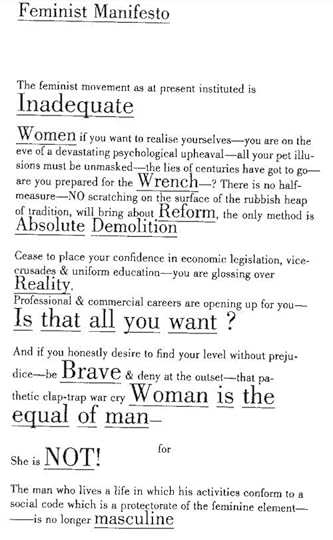
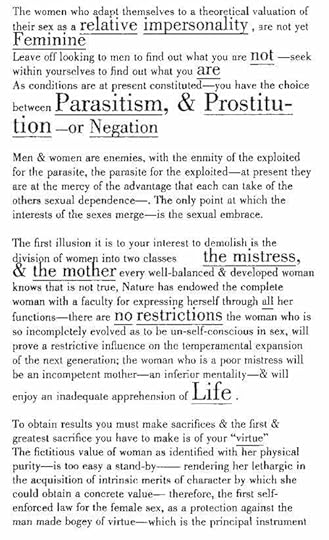
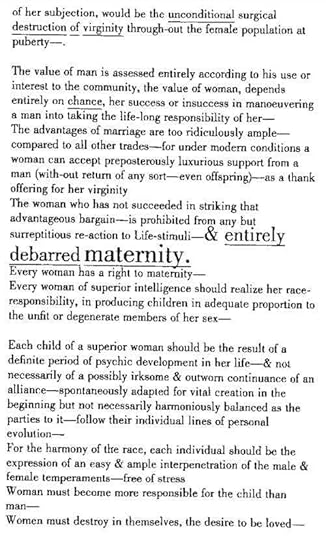
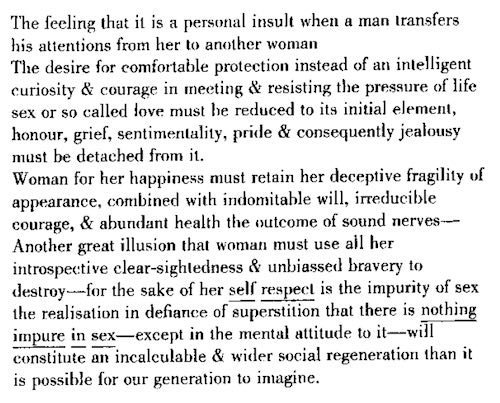
. . . . . . . . .
Feminist Manifesto by Mina Loy (text version)The feminist movement as at present instituted is
Inadequate
Women if you want to realize yourselves-you are on the
eve of a devastating psychological upheaval-all your pet illu-
sions must be unmasked—the lies of centuries have got to go—
are you prepared for the Wrench—? There is no half-
measure—NO scratching on the surface of the rubbish heap
of tradition, will bring about Reform, the only method is
Absolute Demolition
Cease to place your confidence in economic legislation, vice-
crusades & uniform education-you are glossing over
Reality.
Professional & commercial careers are opening up for you—
Is that all you want?
And if you honestly desire to find your level without preju-
dice—be Brave & deny at the outset—that pa-
thetic clap-trap war cry Woman is the
equal of man—
for
She is NOT!
The man who lives a life in which his activities conform to a
social code which is protectorate of the feminine element—
is no longer masculine
The women who adapt themselves to a theoretical valuation of
their sex as a relative impersonality, are not yet
Feminine
Leave off looking to men to find out what you are not —seek
within yourselves to find out what you are
As conditions are at present constituted—you have the choice
between Parasitism, & Prostitu-
tion—or Negation
Men & women are enemies, with the enmity of the exploited
for the parasite, the parasite for the exploited—at present they
are at the mercy of the advantage that each can take of the
others sexual dependence—. The only point at which the
interests of the sexes merge—is the sexual embrace.
The first illusion it is to your interest to demolish is the
division of women into two classes the mistress,
& the mother every well-balanced & developed woman
knows that is not true, Nature has endowed the complete
functions—there are no restrictions on the woman who is
so incompletely evolved as to be un-self-conscious in sex, will
prove a restrictive influence on the temperamental expansion
of the next generation; the woman who is a poor mistress will
be an incompetent mother—an inferior mentality—& will
enjoy an inadequate apprehension of Life.
To obtain results you must make sacrifices & the first &
greatest sacrifice you have to make is of your ”virtue”
The fictitious value of a woman as identified with her physical
purity—is too easy to stand-by rendering her lethargic in
the acquisition of intrinsic merits of character by which she
could obtain a concrete value—therefore, the fist self-
enforced law for the female sex, as a protection against the
man made bogey of virtue—which is the principal instrument
of her subjection, would be the unconditional surgical
destruction of virginity through-out the female population at
puberty—.
The value of man is assessed entirely according to his use or
interest to the community, the value of woman depends
entirely on chance, her success or insuccess in maneouvering
a man into taking the life-long responsibility of her—
The advantages of marriage are too ridiculously ample—
compared to all other trades—for under modern conditions a
woman can accept preposterously luxurious support from a
man (with-out the return of an sort—even offspring)—as a thank
offering for her virginity
The woman who has not succeeded in striking that
advantageous bargain—is prohibited from any but
surreptitious re-action to Life-stimuli—& entirely
debarred maternity.
Every woman has a right to maternity—
Every woman of superior intelligence should realize her race-
responsibility, in producing children in adequate proportion to
the unfit or degenerate members of her sex—
Each child of a superior woman should be the result of a
definite period of psychic development in her life—& and not
necessarily of a possible irksome & outworn continuance of an
alliance—spontaneously adapted for vital creation in the
beginning but not necessarily harmoniously balanced as the
parties to it—follow their individual lines of personal
evolution—
For the harmony of race, each individual should be the
expression of an easy & ample interpenetration of the male &
female temperaments—free of stress
Woman must become more responsible for the child than
man—
Woman must destroy in themselves, the desire to be loved—
The feeling that it is a personal insult when a man transfers
his attention from her to another woman
The desire for comfortable protection instead of an intelligent
curiosity & courage in meeting & resisting the pressure of life
sex or so called love must be reduced to its initial element,
honour, grief, sentimentality, pride and & consequently jealousy
must be detached from it.
Woman for her happiness must retain her deceptive fragility of
appearance, combined with indomitable will, irreducible
courage, & abundant health the outcome of sound nerves—
Another great illusion is that woman must use all her
introspective and clear-sightedness & unbiassed bravery to
destroy—for the sake of her self respect is the impurity of sex
the realization in defiance of superstition that there is nothing
impure in sex—except in the mental attitude to it—will
constitute an incalculable & wider social regeneration than it
is possible for our generation to imagine.
. . . . . . . . .
More about Mina Loy on this site
Mina Loy and “The Crowd” — Modernists in 1920s Paris That is the New Rhythm: Mina Loy and Marianne Moore. . . . . . . . .
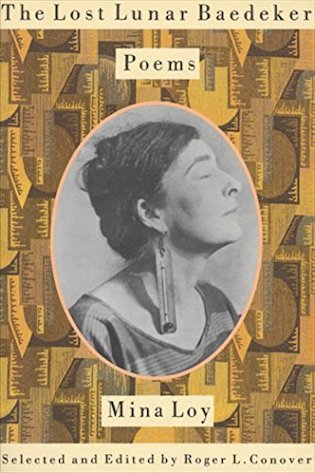
Mina Loy page on Amazon*
. . . . . . . . . .
*This is an Amazon Affiliate link. If a product is purchased by linking through, Literary Ladies Guide receives a modest commission, which helps maintain our site and helps it to continue growing!
The post Mina Loy’s Feminist Manifesto (1914): Foresight and Controversy appeared first on Literary Ladies Guide.
August 7, 2021
Coup De Grâce by Marguerite Yourcenar (1939)
Coup De Grâce by Marguerite Yourcenar is this noted French author’s 1939 novella, her second such work following Alexis (1929). In a 1988 interview in Paris Review, Yourcenar reveals that the novella’s lead female, Sophie, is very close to herself at twenty.
The brief but emotionally devastating story is of the love triangle between three young people affected by the civil war between the White Russians and the Bolsheviks: Erick and Conrad, best friends from childhood; and Sophie, who is burdened with an unrequited love for Conrad.
From the 1957 Farrar, Straus and Cudahy edition: Coup de Grâce is the second of Mme. Yourcenar’s novels to be translated from the French by Grace Frick in collaboration with the author, Memoirs of Hadrian being the first.
Flanking Russia’s outlet to the Baltic Sea lie the countries known before the First World War as the Baltic Provinces, once made up chiefly of vast landed estates controlled by a feudal aristocracy. In the mixture of luxury and primitive living typical of such domains, Erick von L’homond passed the happiest part of his boyhood in the home of Baltic relatives, the family of the Count of Reval.
Called back to Germany for officer’s training before the fall of the Imperial Régime, Erick is too young to fight in the German army before its enforced de-mobilization, but promptly seeks service German generals who volunteer the cause of White Russia against Bolshevism.
. . . . . . . . .
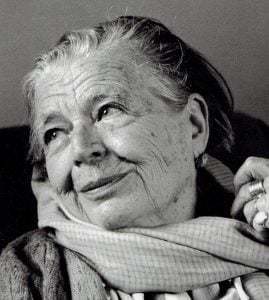
Learn more about Marguerite Yourcenar
. . . . . . . . .
Thus he makes his way to the Reval estate, now ravaged by civil war. Here he rejoins Conrad, the friend of his youth, and Conrad’s sister Sophie, grown beautiful and bitter in the few years of wartime experience.The return of Erick arouses true passion in her, to which he does not respond, but a strange, anguished intimacy grows up between them in the barracks-like existence which the war has forced upon the whole household.
Stunned by the belated revelation of Erick’s feeling for Conrad, Sophie flees to the opposite camp in a desperate attempt at renunciation. Captured after some months by Erick’s troops, she faces death in a scene of brilliant power.
Readers of Memoirs of Hadrian will not be surprised by the quality of Mme. Yourcenar’s prose; they may, however, be unprepared for the swiftness of this narrative in contrast to the meditative pace of those Memoirs.
In both cases a man is speaking, and looking back upon his past, but this time it is a modern
man, outwardly hard and cynical but inwardly tormented by a confusion of emotions. This portrait of a bitter, intelligent young man and an ardent, indomitable girl reflects much of the drama of youth in time of chaos.
. . . . . . . . .
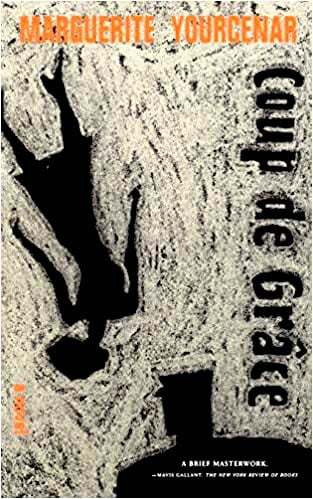 Coup de Grâce on Bookshop.org* and on Amazon*
Coup de Grâce on Bookshop.org* and on Amazon*
. . . . . . . . .
“Friendship affords total certitude above all and that is what distinguishes it from love. It means respect as well and total acceptance of another being.”
. . . . . . . . . .
“I do not regret having yielded to Sophie as much as it lay in my nature to do; at the first glance I had caught sight of something in her incorruptible, with which one could make a compact as sure, and as dangerous, as with an element itself.”
. . . . . . . . . .
“Fire may be trusted, provided one knows that its law is to burn, or die.”
. . . . . . . . .
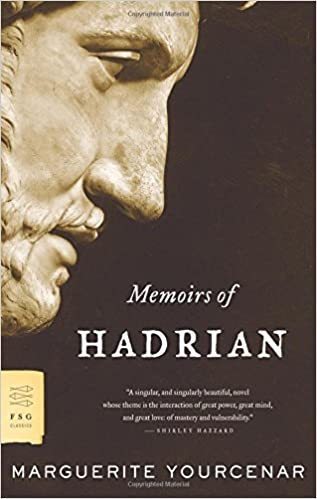
See also: Memoirs of Hadrian
. . . . . . . . . .
. . . . . . . . .
*These are Bookshop.org and Amazon Affiliate links. If a product is purchased by linking through, Literary Ladies Guide receives a modest commission, which helps maintain our site and helps it to continue growing!
The post Coup De Grâce by Marguerite Yourcenar (1939) appeared first on Literary Ladies Guide.
August 4, 2021
10 Fascinating Facts About Dorothea Lange
Jazmin Darznik, author of The Bohemians, a novel of Dorothea Lange’s early career (Ballantine Books, 2021), presents 10 fascinating facts about this trailblazing American documentary photographer of the early 20th century:
Though she is most known for her iconic Depression-era photograph “Migrant Mother,” Dorothea Lange’s photographs put a face to nearly every major historical event of the twentieth century, including World War II and the Japanese American internment camps.
Her photographs are infused with a deep and abiding dedication to documenting the lives of the have-nots in our country—those banished to the fringes by poverty, hardship, forced migration, and discrimination. She also dedicated herself to documenting environmental degradation, as in her series Death of a Valley.
A California transplant, she died in Berkeley in 1965, months before the first major retrospective of her work at the Metropolitan Museum of Art in New York. She’s one of the photographers whose work is included in the current Met exhibit “The New Woman Behind the Camera.”
Her name wasn’t always Dorothea Lange
She was born Dorothea Nutzhorn, the daughter of first-generation German immigrants, in 1895 and went by that name until she left the East Coast in 1918.
Though she never explained her reasons for taking her mother’s surname, the cross-country move likely afforded her the chance to break free of her painful past, which included her father’s abandonment of the family when she was twelve. Whatever her reasons, once she settled in California, she only ever went by Dorothea Lange.
She nearly died of polio as a childAt age seven, Lange contracted polio, which left her with a weakened right foot and permanent limp. Years later she would remark of the experience: “It formed me, guided me, instructed me, helped me, and humiliated me. I’ve never gotten over it, and I am aware of the force and power of it.”
She spent a year confined at home, and when she finally returned to school, she was mocked by the other children and shamed by her own family. Eventually, she trained herself to walk so that her limp was more or less imperceptible. She also wore long skirts and pants to further disguise it.
Lange’s legendary empathy as a photographer grew from this trauma. She had a particular genius for the language of the body and could suggest a whole story from how people held themselves. Her limp also made her vulnerable in ways she drew upon in her work. When walking into a migrant camp during the Depression, for example, she’d sometimes let people see her disability, which helped her establish a connection with them.
. . . . . . . . . .
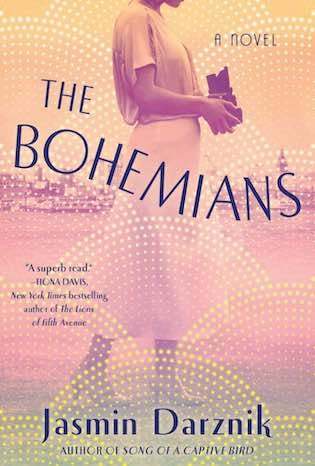
The Bohemians (a novel of Dorothea Lange’s early career)
on Bookshop.org* and on Amazon*
. . . . . . . . . .
After Lange’s father disappeared, her mother went to work as a librarian, then as a social worker. Since the commute took her to New York, she enrolled her daughter in a school on the Lower East Side. Lange would later speak rapturously of the hours she spent ditching school to roam around the city, looking at all different kinds of people.
During this time, she learned to make herself invisible—to carry herself in a way that attracted the least attention—which allowed her greater freedom of movement. This talent would serve her well later when she became a documentary photographer. She knew how to get lost and how to fall in with strangers and felt these were an essential part of creating good pictures.
A thief altered her fate
In 1918, Lange decided to take a trip around the world. She saved up for it for several years, working as a photographer’s assistant in various Manhattan studios. With the US having just entered the war, it was impossible to travel to Europe (the usual destination for a person with an artistic bent), and so she went west intending to travel to Mexico, Hawaii, and the Far East.
Her plans were derailed just as soon as she arrived in San Francisco. A thief stole all her money and she was suddenly stranded in a city where she knew no one. Ever resourceful, she got a job in a five-and-dime shop, where she worked as a photo finisher. A little over a year later, she was running one of the premier portrait studios in San Francisco. California, the place she’d only meant to visit, became the heart of her life’s work—and all on account of a thief.
Before documenting the downtrodden, she did portraits of the rich and famous
While Lange’s name is synonymous with documentary photography, she only started on this path after many years as a portrait photographer. In the 1920s, her clients included the wealthiest families in San Francisco—the Levi-Straus family, the de Youngs, and the Hasses.
It may be hard to reconcile this work with her documentary photography, but Lange never regretted the time she spent in the studio. Portrait photography taught her how to work closely with people, how to draw them out, and how to show them not just as they wished to be seen, but how they truly were. She never stopped making portraits; what changed were the subjects.
. . . . . . . . . .
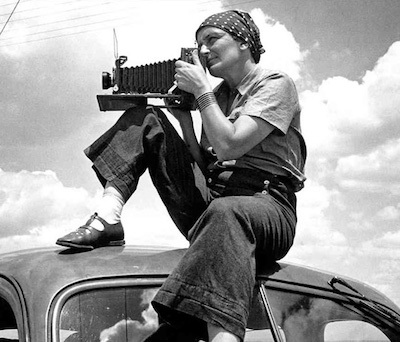
Dorothea Lange in the 1930s
. . . . . . . . . .
The reigning figure in photography in Lange’s day, Alfred Stieglitz, advocated for photographs that rose to the level of art. As a single woman from a working-class background, Lange couldn’t indulge such ideals. She kept up with artistic movements and brought an artist’s keen eye to her work, yet she called herself a “tradeswoman” and took true pride in the title.
She wasn’t a solitary genius
San Francisco in the 1920s was a fantastically exciting place for women artists. The 1906 Earthquake and Fires had displaced the photography establishment, which wound up creating opportunities for women.
By 1918, the year Lange came to the city, photographers such as Imogen Cunningham, Anne Brigman, and Consuelo Kanaga were busy doing phenomenal work there. They were Bohemians, bent on living their lives on their own terms. Lange was able to find friends, colleagues, and mentors. This community emboldened and transformed her.
A homeless man pulled her out of the studio and into the street
The Great Depression hit both Lange’s and her painter-husband Maynard Dixon’s businesses hard. It was from the window of her studio on Montgomery Street that she witnessed strikes and the struggles of the unemployed and homeless.
One day she looked up from her work and saw a man who was lost, destitute, and alone. It was a moment of profound reckoning, as she would later reflect: “The discrepancy between what I was working on … and what was going on up the street was more than I could assimilate.”
That was the first time she went into the streets with the aim of taking photographs. Though it took time to dismantle her business, from then on, she knew she had to be part of what was happening in the world.
. . . . . . . . . .
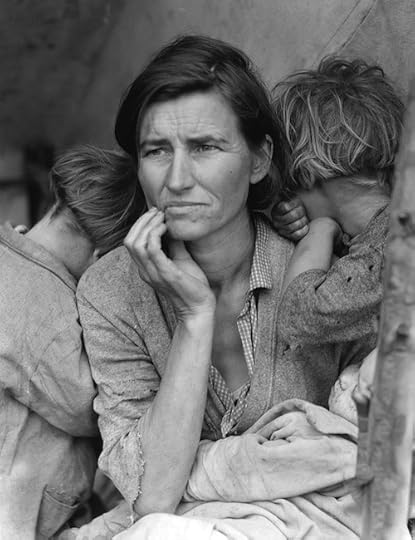
. . . . . . . . . .
One day in 1936, Lange was returning home to the Bay Area after a month alone on the road. She’d been separated from her young sons, which was by then a regular occurrence given the nature of her work. She was tired and frazzled and eager to make it home quickly. When she saw a handwritten sign with the words “Pea Pickers Camp,” she drove past it. A few miles on, she suddenly decided to turn around.
“Migrant Mother,” one of the most iconic and most reproduced images in the history of photography, was taken on that day.
She was regularly censored for her photographs of people of color
When working for the Farm Securities Administration during the Great Depression, she was expressly told to photograph white Americans as this would engender the most support for New Deal programs. Lange regularly flouted these rules, photographing Asian, Latino, and African Americans, as well as Euro-Americans. These pictures were never included in official government pamphlets, but she continued taking them anyway.
Later, when working for the War Department during WWII, she was forbidden from documenting the Japanese internment camps in any way that suggested they were anything other than organized and dignified. She found creative workarounds, such as photographing the shadow of a barbed-wire fence rather than the fence itself.
Lange also smuggled out her more daring pictures, lending them to the efforts to halt the internment. Eventually she was fired, and all her photographs of the camps were impounded. They only became known to the public seven decades after she took them.
Contributed by Jasmin Darznik. Jasmin’s debut novel, Song of a Captive Bird, was a New York Times Book Review “Editors’ Choice,” a Los Angeles Times bestseller, longlisted for the Center for Fiction Prize, and awarded the Writers’ Center’s First Novel Prize. Darznik is also the author of the New York Times bestseller The Good Daughter: A Memoir of My Mother’s Hidden Life. Her books have been published in seventeen countries.
Jasmin was born in Tehran, Iran, and came to America when she was five years old. She holds an MFA in fiction from Bennington College, a JD from the University of California, and a PhD in English from Princeton University. Now a professor of English and creative writing at California College of the Arts, she lives in the San Francisco Bay Area with her family. To learn more, visit Jasmin Darznik.
. . . . . . . . . . .
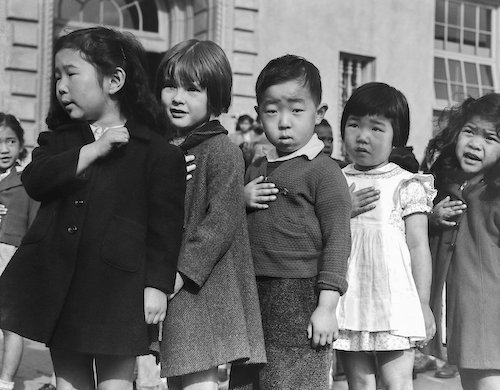
. . . . . . . . . . .
In 1918, a young and bright-eyed Dorothea Lange steps off the train in San Francisco, where a disaster kick-starts a new life. Her friendship with Caroline Lee, a vivacious, straight-talking Chinese American with a complicated past, gives Dorothea entrée into Monkey Block, an artists’ colony and the bohemian heart of the city.
Dazzled by Caroline and her friends, Dorothea is catapulted into a heady new world of freedom, art, and politics. She also finds herself unexpectedly falling in love with the brilliant but troubled painter Maynard Dixon. Dorothea and Caroline eventually create a flourishing portrait studio, but a devastating betrayal pushes their friendship to the breaking point and alters the course of their lives.
The Bohemians captures a glittering and gritty 1920s San Francisco, with a cast of unforgettable characters, including cameos from Frida Kahlo, Ansel Adams, and D. H. Lawrence. A vivid and absorbing portrait of the past, it is also eerily resonant with contemporary themes, as anti-immigration sentiment, corrupt politicians, and a devastating pandemic bring tumult to the city—and the gift of friendship and the possibility of self-invention persist against the ferocious pull of history.
. . . . . . . . . . .
*These are Bookshop.org and Amazon Affiliate links. If a product is purchased by linking through, Literary Ladies Guide receives a modest commission, which helps maintain our site and helps it to continue growing!
The post 10 Fascinating Facts About Dorothea Lange appeared first on Literary Ladies Guide.
August 2, 2021
Memoirs of Hadrian, Marguerite Yourcenar’s Masterpiece
Memoirs of Hadrian, a novel by Marguerite Yourcenar, the Belgian-born French writer, was first published in France in 1951. Originally written in French, it was published in English in 1954. It was an ambitious project many year in the making; Yourcenar first had the idea for it in the 1920s, then worked on it, on and off, in the 1930s.
Many years in gestation, it was a book that, with the benefit of hindsight, she didn’t think she could have written when she was younger. “There are books,” she said later, “which one should not attempt before having passed the age of forty.”
Considered this author’s masterwork, and the book she’s best remembered for, it was from the start a critical success. The novel, told from a first person person by the Roman Emperor Hadrian, begins with a letter to his adoptive grandson, who became Marcus Aurelius and his successor.
Hadrian continues this imagined memoir with tales of his military conquests. He muses on his penchant for music, philosophy, and poetry and all things artistic and cultural.
The time of Hadrian’s rule is described by him as his personal “age of Gold,” which he attributes to his lover, Antinous. The love they share is more passionate and real makes his marriage to Sabina. As encapsulated from the Modern Library edition:
“At once a psychological novel and a meditation on history, Memoirs of Hadrian is written in the form of a testamentary letter from the Roman Emperor Hadrian (76-138 AD) to his successor, the youthful Marcus Aurelius. A tour de force of scholarship that uses Hadrian’s extant writings and the writings of historians, friends and enemies, It is a vivid reconstruction of the intimate life of the emperor and his entourage.
Hadrian appears as one of the Western world’s greatest liberals, a humanist who based man’s chances of happiness and security on the culture that was Greece and the great organizing power that was Rome. In a prose of epigrammatic brilliance, Marguerite Yourcenar has painted an unforgettable self-portrait of Hadrian, as remarkable for its psychological depth as for its authentic recreation of time and place.”
Yourcenar, who was the first woman to be elected to the Académie Française, assisted in the translation of Memoirs of Hadrian from French to English. The book was was highly praised in any language in which it was published. Here are two samples from American newspapers.
Marguerite Yourcenar’s Classic Novel
From The Capital Times, March 26, 1964: It is cause for wonder that there are relatively few good novels of ancient Rome. Hermann Broch’s The Death of Virgil is. of course, the very best such novel: it has no peer. But certainly Marguerite Yourcenar’s Memoirs of Hadrian come very close to equality with Broch’s novel.
The present edition contains the addition of “reflections” on the composition of the book, translated by Grace Frick in collaboration with the author, and with many illustrations which weren’t in the original first edition published ten years before.
It is a largely psychological novel and a meditation in history. and it is something new in that its approach to a historical figure is in depth. Its form is that of autobiography, presumably written by the Emperor Hadrian (78-138 AD) to his grandson, Marcus Aurelius.
Miss Yourcenar reconstructs the life of the Emperor and his many-faceted character — his wars, and his loves, particularly that one which seems to have been the chief love of his life — that for the handsome youth Antinous, the traumatic effect of his infidelity on the emperor.
Readers who may have missed this remarkable work up to this time will now find it readily. It is enriched by the additions which have been made to it. By any standards, Memoirs of Hadrian is one of the classic masterpieces of the contemporary novel.
. . . . . . . . . .

Memoirs of Hadrian on Bookshop* and on Amazon*
. . . . . . . . . .
From The Pittsburgh Press, June 21, 1963, reviewed by Mary C. Robb: First published in English in 1954, this edition is enhanced by fine illustrations and a supplementary section entitled “Reflections in the Composition of “Memoirs of Hadrian.” The brilliant translation from the French is the work of Grace Frick and the author.
In a leisurely and deeply probing letter to Marcus Aurelius, his adopted grandson and chosen successor, the dying Hadrian reviews his own life and, more importantly, his understanding of himself and the Roman world he has ruled, and his hopes and fears for the future.
Mme. Yourcenar has described this letter as “a psychological novel and a meditation on history,” but the description, while adequate, hardly includes the remarkable effect she has produced.
Part of this effect is no doubt due to Hadrian himself, an Emperor who ruled at the height of Rome’s territorial expansion, and who believed deeply and firmly in the need for peace and justice. He was a soldier, a scholar, and a man of wide.ranging curiosity and powerful emotions, well worth our study.
Such a person deserves the right to tell his own story in his own way and this Mme. Yourcenar has allowed him to do with complete artistic integrity.
From the first page to the last the reader is aware only of Hadrian as his mind and heart review the past—the years with the legions on the frontiers, the halcyon days with Antinous, the labor of rule, the endless speculations about life and death and immortality, the good and the bad that were himself.
Memoirs Of Hadrian is a rare instance of an author’s mastery of subject so complete that the book seems to have written itself.
More about Memoirs of Hadrian Portrait of Power Embodied in a Roman Emperor Becoming the Emperor Reader discussion on Goodreads
Quotes from Memoirs of Hadrian
“My hunger for power was like the craving for love, which keeps the lover from eating or sleeping, from thinking or even from loving as long as certain rites remain unperformed. The most urgent tasks seemed vain when I was not the free master over decisions affecting the future; I needed to be assured of reigning in order to recapture the desire to serve.”
. . . . . . . . . .
“Of all our games, love’s play is the only one which threatens to unsettle our soul, and is also the only one in which the player has to abandon himself to the body’s ecstasy.”
. . . . . . . . . .
“Nailed to the beloved body like a slave to a cross, I have learned some secrets of life which are now dimmed in my memory by the operation of that same law which ordained that the convalescent, once cured, ceases to understand the mysterious truths laid bare by illness, and that the prisoner, set free, forgets his torture, or the conqueror, his triumph passed, forgets his glory.”
. . . . . . . . . .
“Our great mistake is to try to exact from each person virtues which he does not possess, and to neglect the cultivation of those which he has.”
. . . . . . . . . .
“I am not sure that the discovery of love is necessarily more exquisite than the discovery of poetry.”
. . . . . . . . . .
“The written word has taught me to listen to the human voice, much as the great unchanging statues have taught me to appreciate bodily motions. On the other hand, but more slowly, life has thrown light for me on the meaning of books.”
. . . . . . . . . .
“Like everyone else I have at my disposal only three means of evaluating human existence: the study of self, which is the most difficult and most dangerous method, but also the most fruitful; the observation of our fellowmen, who usually arrange to hide secrets where none exist; and books, with the particular errors of perspective to which they inevitably give rise.”
. . . . . . . . . .
“He had reached that moment in life, different for each one of us, when a man abandons himself to his demon or to his genius, following a mysterious law which bids him either to destroy or outdo himself.”
. . . . . . . . . .
“The memory of most men is an abandoned cemetery where lie, unsung and unhonored, the dead whom they have ceased to cherish. Any lasting grief is reproof to their neglect.”
. . . . . . . . . .
“I knew that good like bad becomes a routine, that the temporary tends to endure, that what is external permeates to the inside, and that the mask, given time, comes to be the face itself.”
. . . . . . . . . .
“Laws change more slowly than custom, and though dangerous when they fall behind the times are more dangerous still when the presume to anticipate custom.”
. . . . . . . . . .
*These are Bookshop.org and Amazon Affiliate links. If a product is purchased by linking through, Literary Ladies Guide receives a modest commission, which helps maintain our site and helps it to continue growing!
The post Memoirs of Hadrian, Marguerite Yourcenar’s Masterpiece appeared first on Literary Ladies Guide.
July 30, 2021
Summer by Edith Wharton (1917)
This analysis of Summer by Edith Wharton, a 1917 novella of the coming of age of Charity Royall, a small-town girl, is excerpted from Girls in Bloom: Coming of Age in the Mid-20th Century Woman’s Novel by Francis Booth, reprinted by permission.
The slim novel was one of Wharton’s personal favorites. She called it the “hot Ethan,” referring to her 1911 novella, Ethan Frome. It’s unclear if she was speaking of the book’s setting in the summer season, Charity’s sexual awakening, or both.
Unusually for Edith Wharton (1862–1937), best known for her novels of patrician Gilded-Age New York like The House of Mirth and The Age of Innocence, this novella is set in a tiny New England town close to ‘the Mountain,’ from which Charity Royall has been brought down as a baby by lawyer Royall, as he is universally known, and his wife, who is dead before the story begins.
Feeling trapped
Charity and Mr. Royal now live alone together in the ‘red house.’ ‘Charity was not very clear about the Mountain; but she knew it was a bad place, and a shame to have come from;’ she knows that she should be grateful to lawyer Royall for saving her.
Still, Charity, like many other adolescent girls in fiction, feels trapped in her small and small-minded remote town; ‘How I hate everything!’ she thinks regularly to herself. She has only once in her life been to even a medium-sized town, and that only for one day.
In the course of that incredible day Charity Royall had, for the first and only time, experienced railway-travel, looked into shops with plate-glass fronts, tasted cocoanut pie, sat in a theatre, and listened to a gentleman saying unintelligible things before pictures that she would have enjoyed looking at if his explanations had not prevented her from understanding them. This initiation had shown her that North Dormer was a small place, and developed in her a thirst for information that her position as custodian of the village library had previously failed to excite.
Two afternoons a week, Charity sits at her desk in the library, ‘her prison-house,’ which was founded by a long dead author, ‘and wondered if he felt any deader in his grave than she did in his library.’
. . . . . . . . .
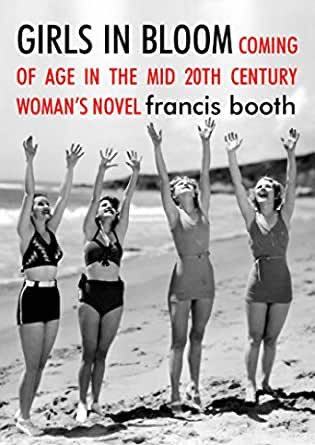
Girls in Bloom by Francis Booth on Amazon*
Girls in Bloom on Amazon UK*
Girls in Bloom in full on Issuu
. . . . . . . . .
When Mrs. Royall had died, there had been talk of sending Charity to a boarding school, initiated by the kindly Miss Hatchard, but lawyer Royall will not let her go. Charity understands that this is because he does not want to let her go and be on his own.
He was a dreadfully ‘lonesome’ man; she had made that out because she was so ‘lonesome’ herself. He and she, face-to-face in that sad house, had sounded the depths of isolation; and though she felt no particular affection for him, and not the slightest gratitude, she pitied him because she was conscious that he was superior to the people about him, and that she was the only being between him and solitude.
Miss Hatchard seems to understand that Royall’s feelings for his teenage ward may be other than what they seem. She tells Charity that she is too young to understand; Charity replies, ‘Oh no, I ain’t,’ but in fact she is. It is only later that she realizes that her guardian wants to become something like Mr. Rochester to her Jane Eyre.
She was awakened by a rattling at her door and jumped out of bed. She heard Mr. Royall’s voice, low and peremptory, and opened the door, fearing an accident. No other thought had occurred to her; but when she saw him in the doorway, a ray from the autumn moon falling on his discomposed face, she understood.
For a moment they looked at each other in silence; then, as he put his foot across the threshold, she stretched out her arm and stopped him.
‘You go right back from here,’ she said, in a shrill voice that startled her; ‘you ain’t going to have that key tonight.’
‘Charity, let me in. I don’t want the key. I’m a lonesome man,’ he began, in the deep voice that sometimes moved her.
Her heart gave a startled plunge, but she continued to hold him back contemptuously. ‘Well, I guess you made a mistake, then. This ain’t your wife’s room any longer.’
She was not frightened, she simply felt a deep disgust; and perhaps he divined it or read it in her face, for after staring at her a moment he drew back and turned slowly away from the door.
An unwelcome proposal
In the cold light of day he asks her to marry him. ‘As he stood there before her, unwieldy, shabby, disordered, the purple veins distorting the hands he pressed against the desk, and his long orator’s jaw trembling with the effort of his avowal, he seemed like a hideous parody of the fatherly old man she had always known.’
She mocks him. ‘How long is it since you’ve looked at yourself in the glass?’ She tells him she assumes, miser that he is, that he only wants to marry her because ‘it would be cheaper to marry me that to keep a hired girl’. Charity insists that if she is to stay in the house there must be another woman; Royall gives in to her and brings in an old woman from the poorhouse as a kind of maid.
Charity knew that what had happened on that hateful night would not happen again. She understood that, profoundly as she had despised Mr. Royall ever since, he despised himself still more profoundly. If she had asked for a woman in the house it was far less for her own defense than for his humiliation. She needed no one to defend her; his humbled pride was her surest protection … Nothing now would ever shake her rule in the red house.
Enter Lucius
Soon after this, a young man comes to the village: Miss Hatchard’s cousin Lucius Harney, an architect come to write a booklet on the local abandoned houses. He comes into the library and dazzles Charity with his knowledge.
‘Never had her ignorance of life and literature so weighed on her as in reliving the short scene of her discomfiture.’ That night she sees herself marrying him. ‘A clumsy band and button fastened her unbleached night-gown about the throat. She undid it, freed her thin shoulders, and saw herself a bride in low-necked satin, walking down an aisle with Lucius Harney. He would kiss her as they left the church.’
But Lucius tells Miss Hatchard what a mess the library is in; Charity takes it as a personal insult and is devastated that ‘the first creature who had come toward her out of the wilderness had brought her anguish instead of joy.’ But soon he makes up with her and they start to spend time together, he seeming genuinely affectionate towards her.
Royall is of course jealous and tells Lucius what Charity herself has never known: she is ‘the child of a drunken convict and of a mother who wasn’t “half human,” and was glad to have her go.’ This does not seem to put Lucius off and they start to spend most of their time together until suddenly Lucius says he is leaving town.
Charity decides she will not beg him, and that if he wants her he must come to her, but the night before he is due to leave she sits outside his bedroom. She does not go in. But Harney does not go at this time and she does eventually give way.
‘With sudden vehemence he wound his arms about her, holding her head against his breast while she gave him back his kisses. An unknown Harney had revealed himself, a Harney who dominated her and yet over whom she felt herself possessed of a new mysterious power.’
Lawyer Royall comes around
Royall realizes what has happened. ‘You – damn – whore!’ he calls her. But Charity does not see things that way. ‘She had always thought of love as something confused and furtive, and he made it as bright and open as the summer air.’ But Harney has been deceiving her and soon after, he really does go, leaving her on a very weak pretext; she later finds out that he prefers one of her friends.
‘She had given him all she had – but what was it compared to the other gifts life held for him? She understood now the case of girls like herself to whom this kind of thing happened. They gave all they had, but their all was not enough: it could not buy more than a few moments.’
Naturally, Charity is pregnant.
‘Charity, till then, had been conscious only of a vague self-disgust and a frightening physical distress; now, all of a sudden, there came to her the grave surprise of motherhood.’
Everyone has abandoned her; even the doctor to whom she goes for a pregnancy test tricks her. She journeys by herself up the Mountain and meets her mother who, in a melodramatic twist untypical of Wharton, is dying. Charity thinks for a while that she might go to live there but it turns out to be far too wild for her. When she comes down from the Mountain, the repentant Mr. Royall turns out to be an ally and comes to take her home.
‘Mr. Royall seldom spoke, but his silent presence gave her, for the first time, a sense of peace and security. She knew that where he was there would be warmth rest, silence; and for the moment they were all she wanted.’
. . . . . . . . . .
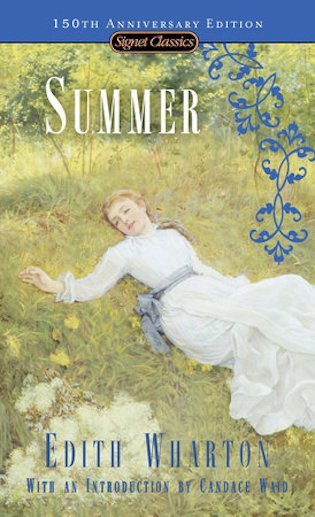
Summer on Amazon*
. . . . . . . . . .
. . . . . . . . . .
Contributed by Francis Booth,* the author of several books on twentieth century culture:
Amongst Those Left: The British Experimental Novel 1940-1960 (published by Dalkey Archive); Everybody I Can Think of Ever: Meetings That Made the Avant-Garde; Girls in Bloom: Coming of Age in the Mid-Twentieth Century Woman’s Novel; Text Acts: Twentieth Century Literary Eroticism; and Comrades in Art: Revolutionary Art in America 1926-1938.
Francis has also published several novels: The Code 17 series, set in the Swinging London of the 1960s and featuring aristocratic spy Lady Laura Summers; Young adult fantasy series The Watchers; and Young adult fantasy novel Mirror Mirror. Francis lives on the South Coast of England. He is currently working on High Collars and Monocles: Interwar Novels by Female Couples.
. . . . . . . . .
*These are Amazon Affiliate links. If a product is purchased by linking through, Literary Ladies Guide receives a modest commission, which helps maintain our site and helps it to continue growing!
The post Summer by Edith Wharton (1917) appeared first on Literary Ladies Guide.
July 26, 2021
Hitty: Her First Hundred Years by Rachel Field (1929)
Among the works Rachel Field (1894 – 1942) created for children, the most celebrated and enduring is Hitty: Her First Hundred Years, published in 1929. Written in the voice of a 100-year-old doll telling her life story, it gave Field the distinction of being the first woman to win a Newberry Medal (1930). It also received the acclaimed Lewis Carroll Shelf Award.
Hitty enjoyed a long life in print. The 1959 MacMillan Company edition, retaining the original illustrations by Dorothy P. Lathrop, describes the book as follows:
“Hitty is a doll of great charm and real character. It is a privilege to be able to publish her memoirs which, besides being full of the most thrilling adventures on land and sea, also reveal a personality which is delightful and forceful.
One glance at her portrait will show that she is no ordinary doll. Hitty, or Mehitable, as she was really named, was carved from a piece of white ash by a peddler who was spending the winter in Maine. Phoebe Preble, for whom Hitty was made, was very proud of her doll and took her everywhere, even on a long sailing trip in a whaler.
In this way, Hitty’s horizon was broadened and she acquired ample material to make her memoirs exciting and instructive. Hitty is a real doll, over one hundred years old, and now belongs to both Miss Field and Miss Lathrop. Recently she has done more traveling all over America in special exhibits to get acquainted with the young readers who love her story.”
How Rachel Field was inspired to write this book is a story in itself. She and her friend Dorothy Lathrop, an illustrator, had been eyeing a tiny wooden doll in a New York City antique shop. No larger than six inches, the calico-clad brown-skinned doll seemed to have so much character. At twenty-five dollars, quite a tidy sum back then, she was out of their budget. Finally, the two friends agreed to pool their money to purchase her, and at once, little Hitty stirred their imaginations.
. . . . . . . . . .
[image error]
Hitty: Her First Hundred Years on Bookshop.org* and on Amazon*
. . . . . . . . . .
In The Field House, a biography of Rachel Field, Robin Clifford Wood writes of the book’s inception:
“The following summer Dorothy came to visit Rachel on Sutton Island, along with their friend Abbie Evans. Rachel wrote to her friend Prentiss: ‘Dorothy Lathrop, Abbie Evans and I had a grand week together, mapping out the adventures of Hitty, the wooden doll. That is to be a real book, if it ever gets on paper and it must.
After her week on Sutton, Rachel’s excitement about her Hitty book grew daily. ‘It was a real snowball of a book,’ she told one reporter, recounting how a great idea of her historical research and family recollections found their way in to Hitty’s story, the narrative account of the adventures of a one-hundred-year old doll.”
In 1999, Rosemary Wells and illustrator Susan Jeffers brought out an adaptation titled Rachel Field’s Hitty: Her First Hundred Years. Cathryn M. Mercier, a children’s literature scholar, wrote that “the adaptation removes some of the more archaic and problematic language found in Field’s novel, but that Hitty loses some of her distinct characterization.”
. . . . . . . . .
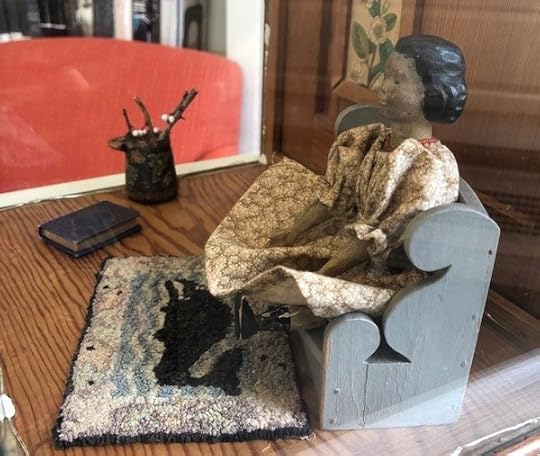
. . . . . . . . .
Today, the original Hitty doll is displayed in the Stockbridge Library Association in Stockbridge, MA, where Rachel spent the first ten years or so of her life.
Following are two original reviews of Hitty: Her First Hundred Years from 1929, the year it was first published.
Adventures of Doll Carved by Sea Captain Are Told in Prize Book
From The Evening Express (Los Angeles), November 8, 1929: One of the most talked-about books for children this year is a doll story, published by the MacMillan Company of New York.
Hitty: Her First Hundred Years is the title of the story which began over 100 years ago when a sea captain in Maine really did carve a doll for his daughter out of good, stout mountain ash wood.
In 1928 Miss Rachel Field, the author, and Miss Dorothy Lathrop, the artist, found this doll in an antique shop In New York, her name plainly embroidered on her antiquated garments. She became their joint property, and they were so proud of her story as it developed in prose and pictures that at one time it looked as though only the old Anderson Galleries could contain and control the auctioning off of this manuscript among their many publishing friends.
Hitty, born in Maine, goes to sea on a whaling vessel, is lost in a temple on a South Sea Island, has poetry written to her In Philadelphia by Mr. Whittier, sees some exciting life on the Mississippi, and fills out her long career with periods of “going into camphor.”
She is the sort of biographer highly appreciated by elders who read aloud, and beloved by children who read to themselves. The book is beautifully bound and illustrated with color inserts and artistic black and whites.
. . . . . . . . . .

You might also enjoy:
The Field House by Robin Clifford Wood: Rediscovering Rachel Field
. . . . . . . . . .
From the Mansfield, Ohio News-Journal, November 17, 1929: Hitty, Her First Hundred Years is the engaging title of the new children’s book by a distinguished author and an equally distinguished artist, who have contributed many beautiful volumes to American publishing.
Rachel Field, author of Eliza and the Elves, Little Dog Toby, Polly Patch-work, and many other books successful with younger children, has written the adventures of Hitty.
Dorothy Lathrop, whose first illustrating success was with the beautiful de la Mare books and who has illustrated George MacDonald’s and other unusual fairy tales, has made the most beautiful pictures of her career for the story. The Macmillan Company, famous for its attractive children’s books, is the publisher.
Hitty is a doll of great charm and real character. One glance at her portrait will show that she is no ordinary doll. Hitty, or Mehitable. as she was really named, was carved from a piece of white ash by a peddler who was spending the winter in Maine. Phoebe Preble, for whom Hitty was made, was very proud of her doll and took her everywhere, even on a long sailing trip in a whaler.
In this way, Hitty’s horizon was broadened and she acquired ample material to make her memoirs exciting and instructive.
. . . . . . . . .
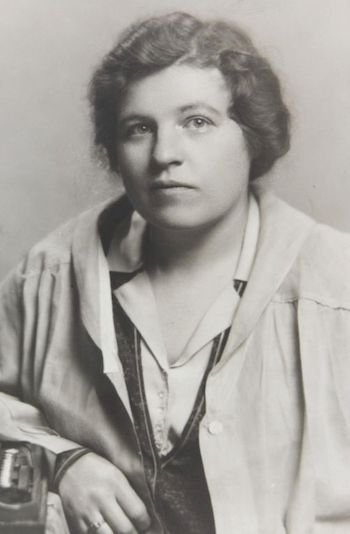
21 Fascinating Facts About Rachel Field
. . . . . . . . .
*These are Bookshop Affiliate and Amazon Affiliate links. If a product is purchased by linking through, Literary Ladies Guide receives a modest commission, which helps maintain our site and helps it to continue growing!
The post Hitty: Her First Hundred Years by Rachel Field (1929) appeared first on Literary Ladies Guide.



